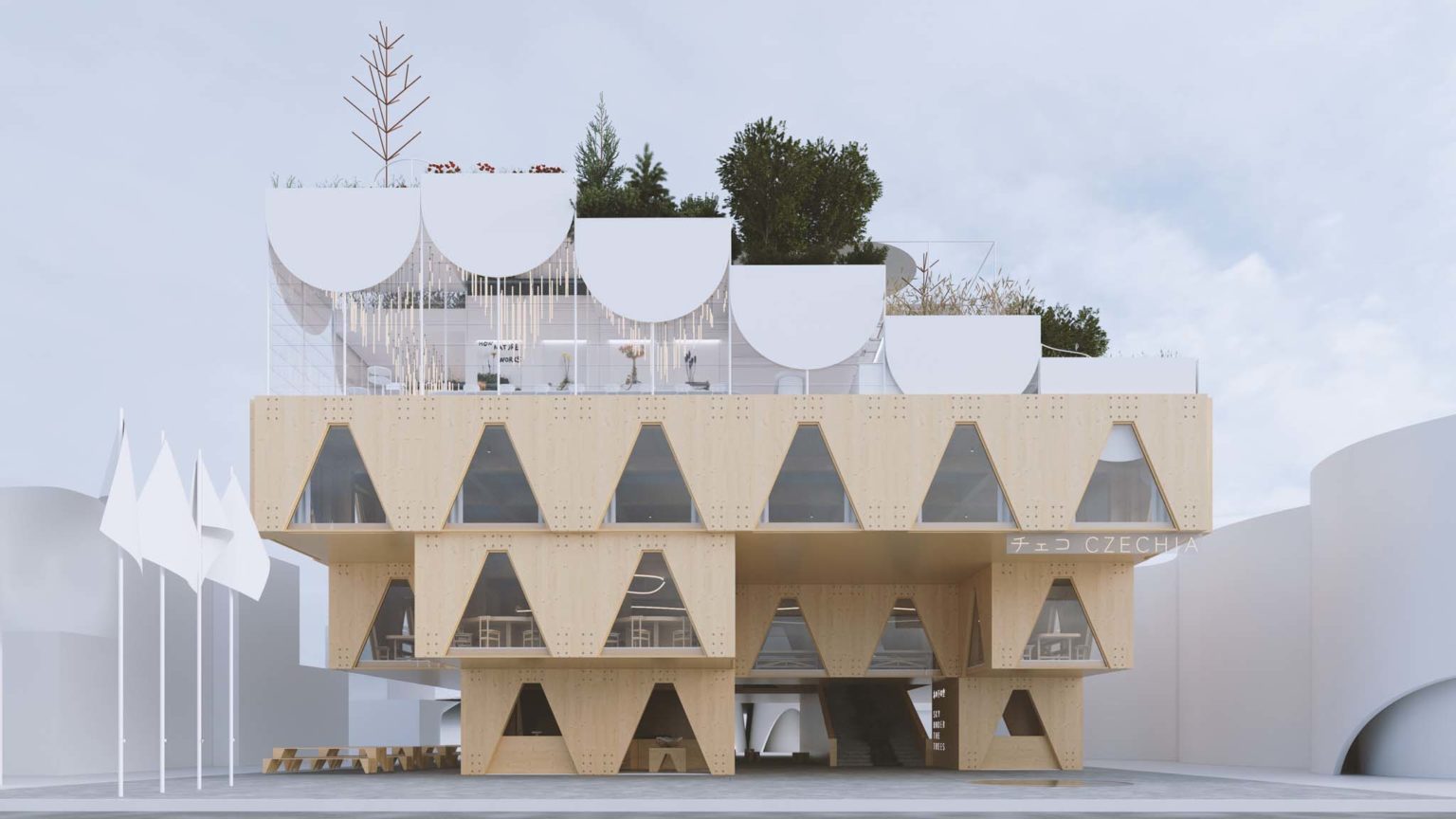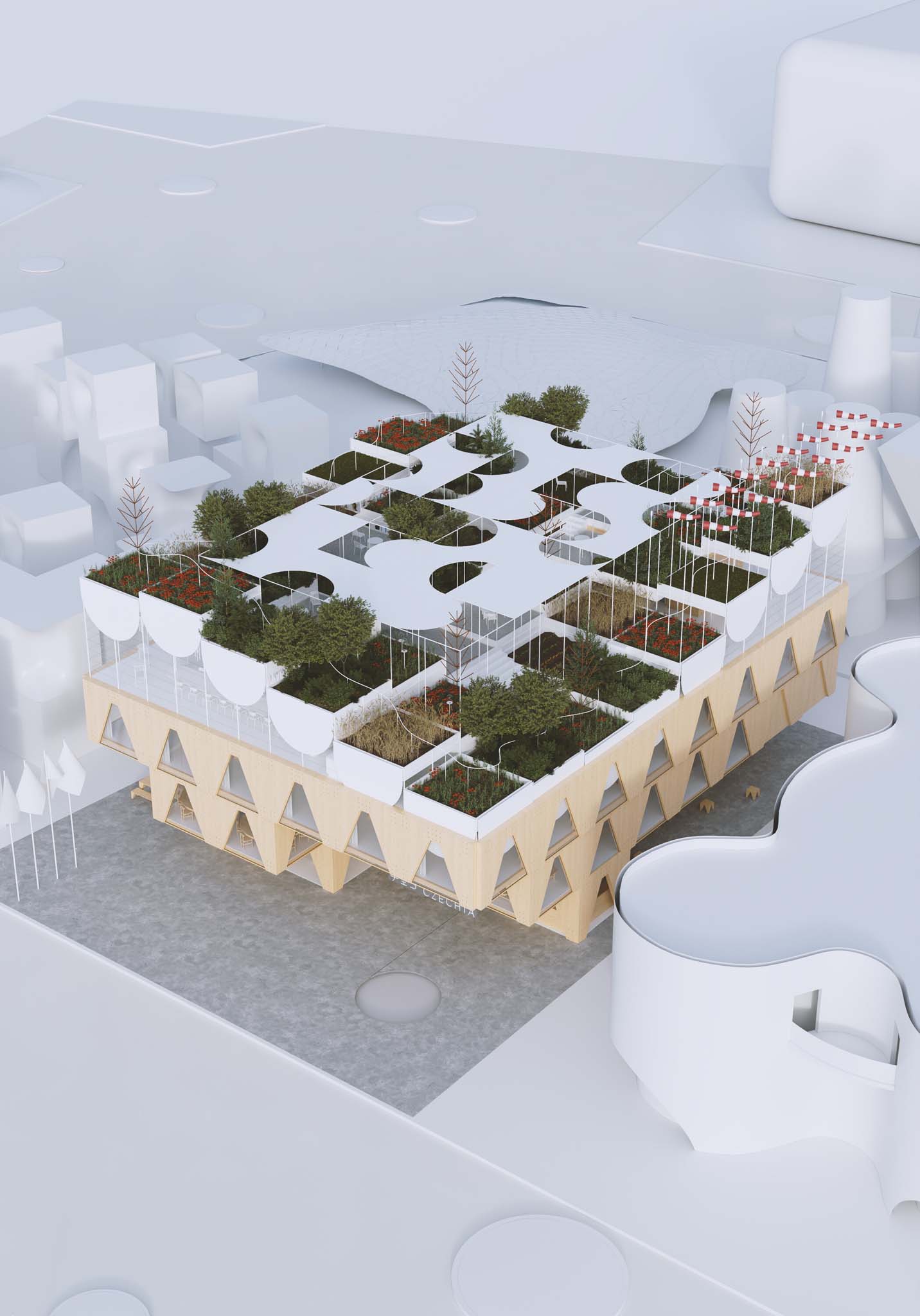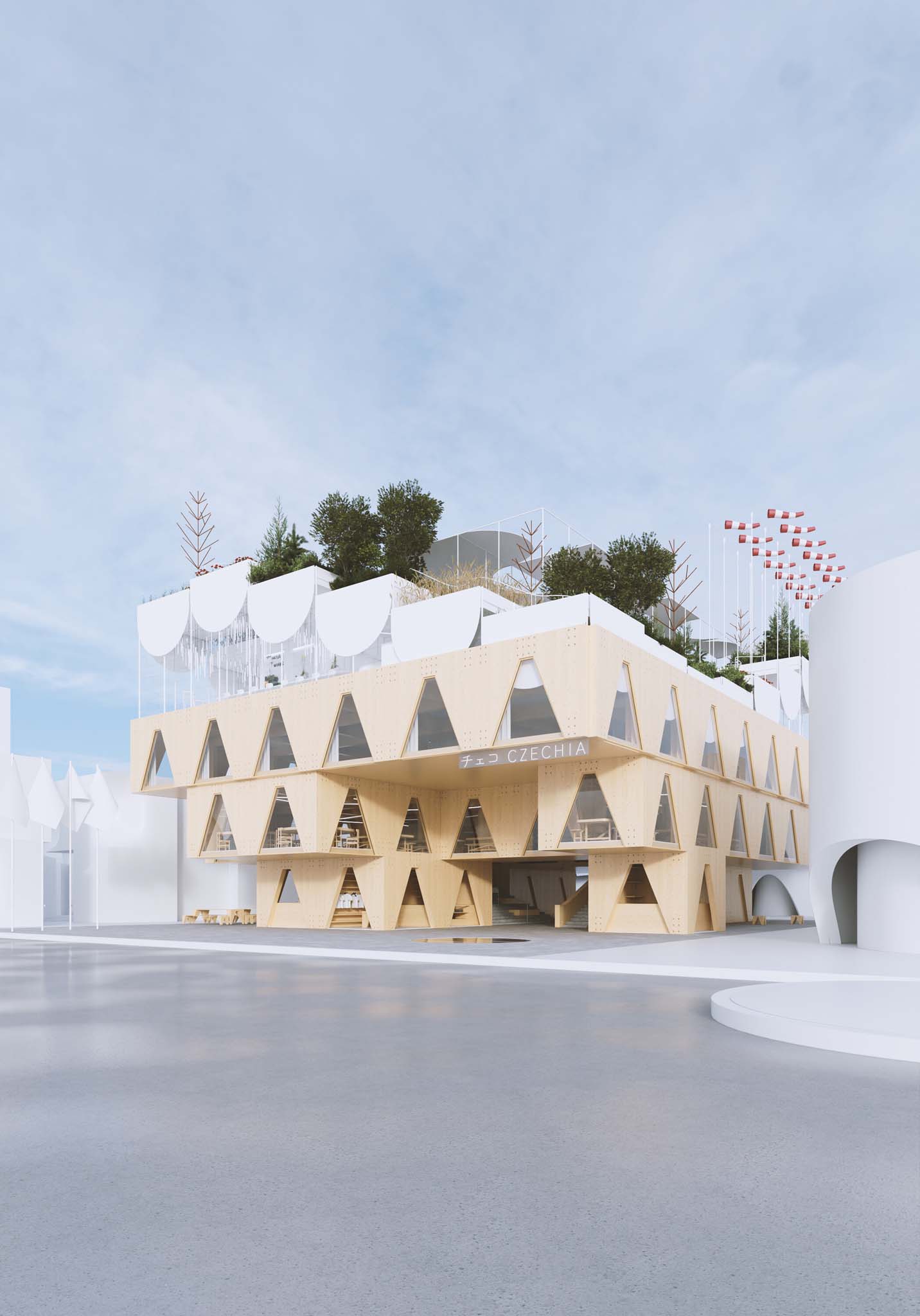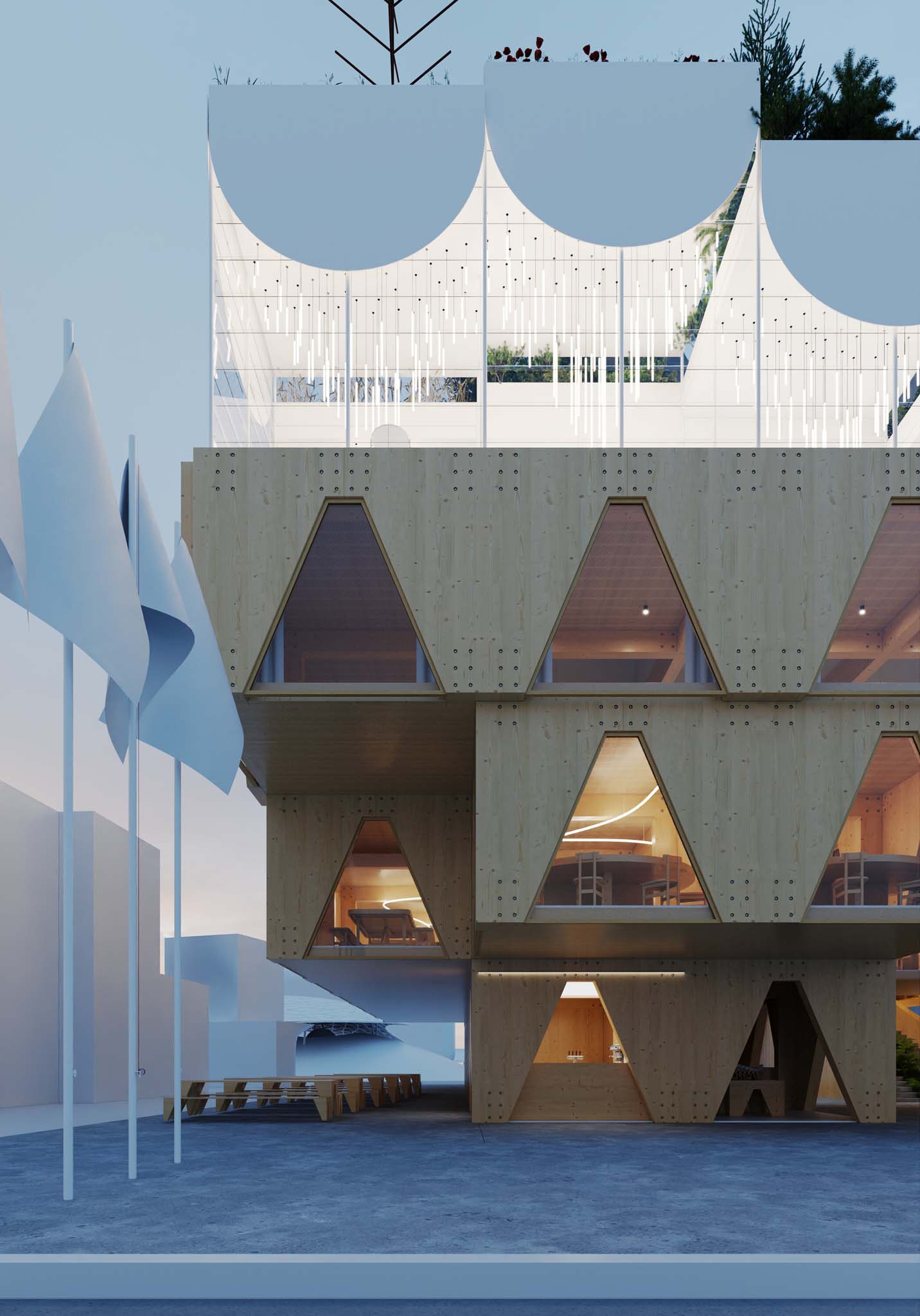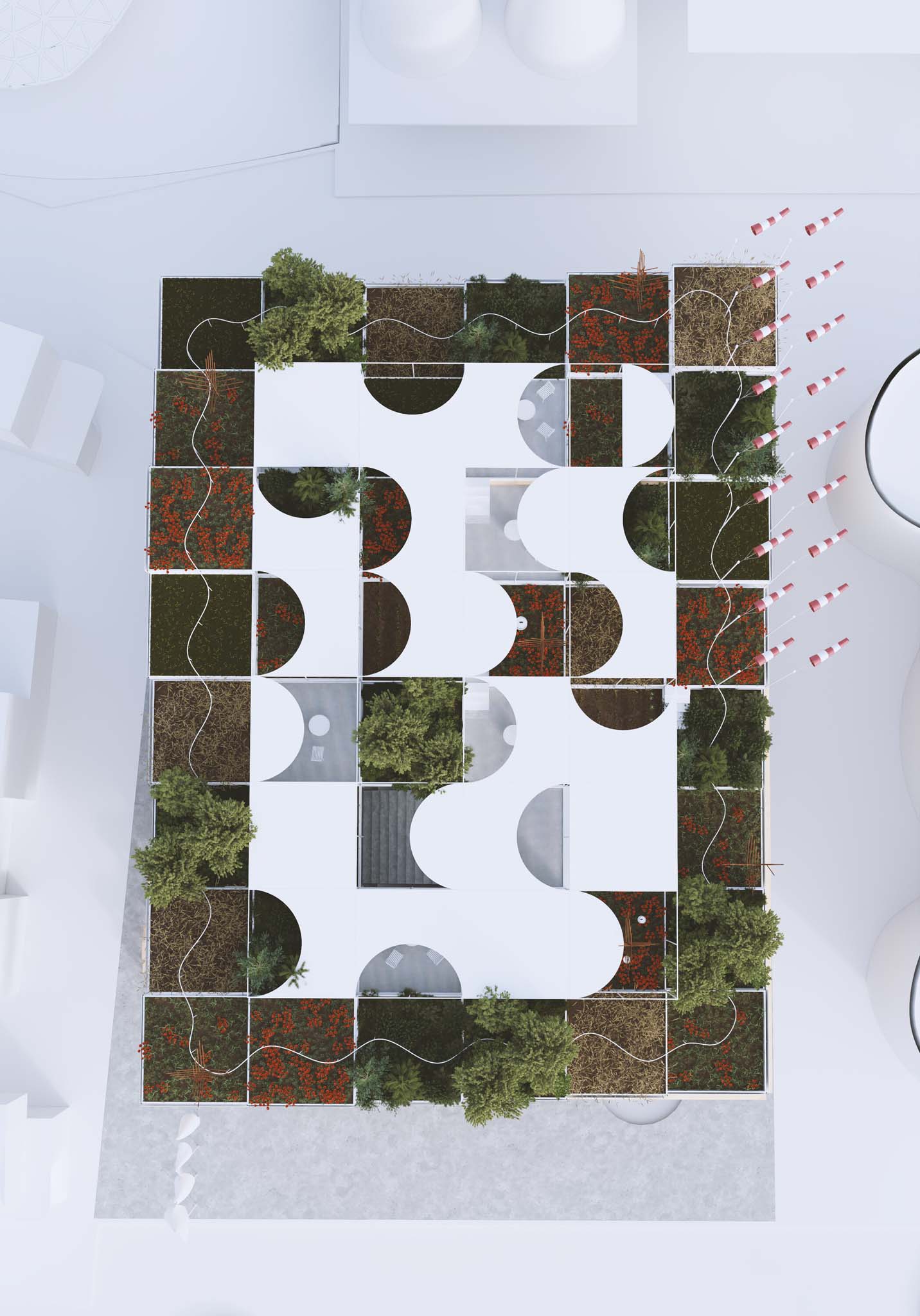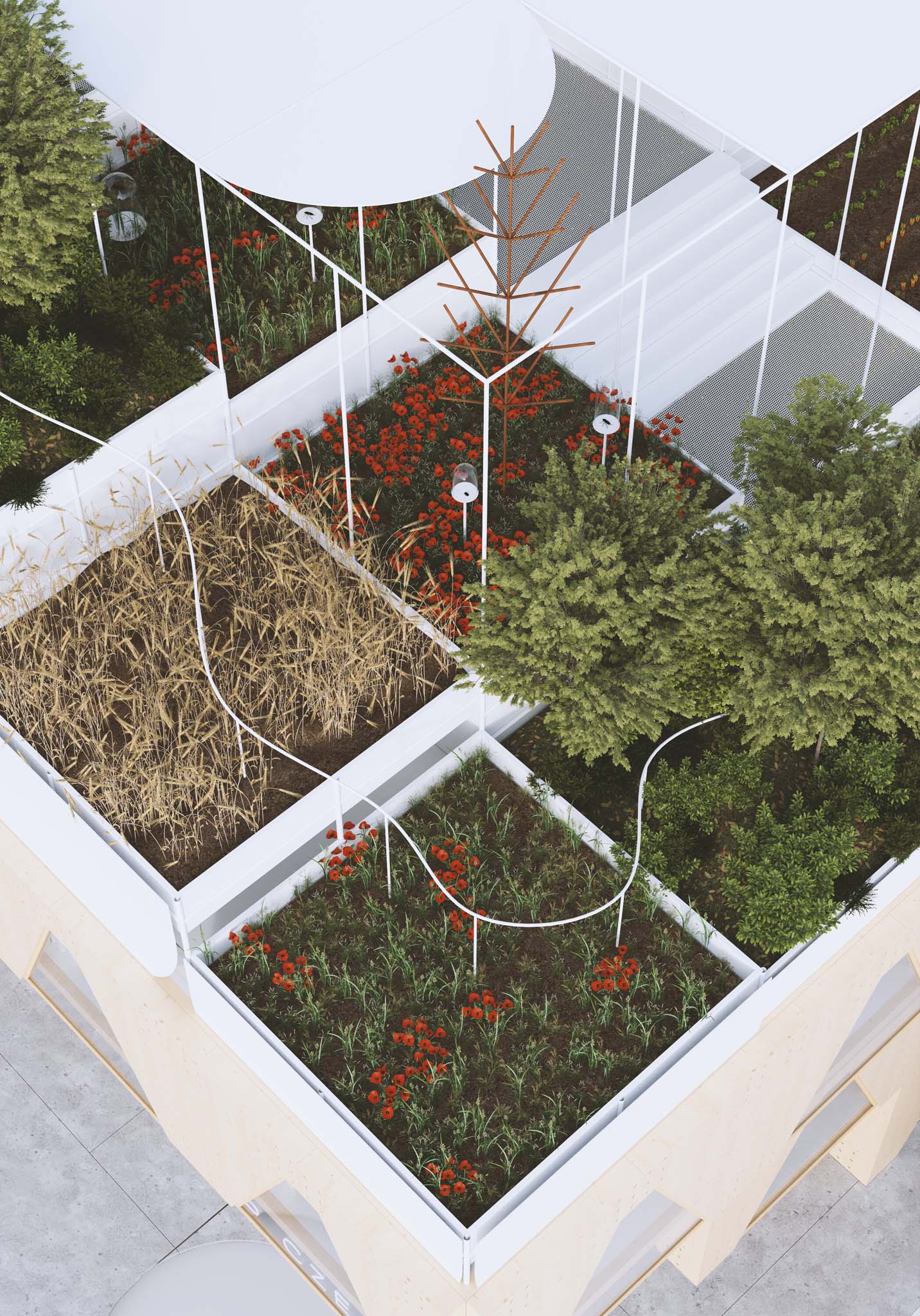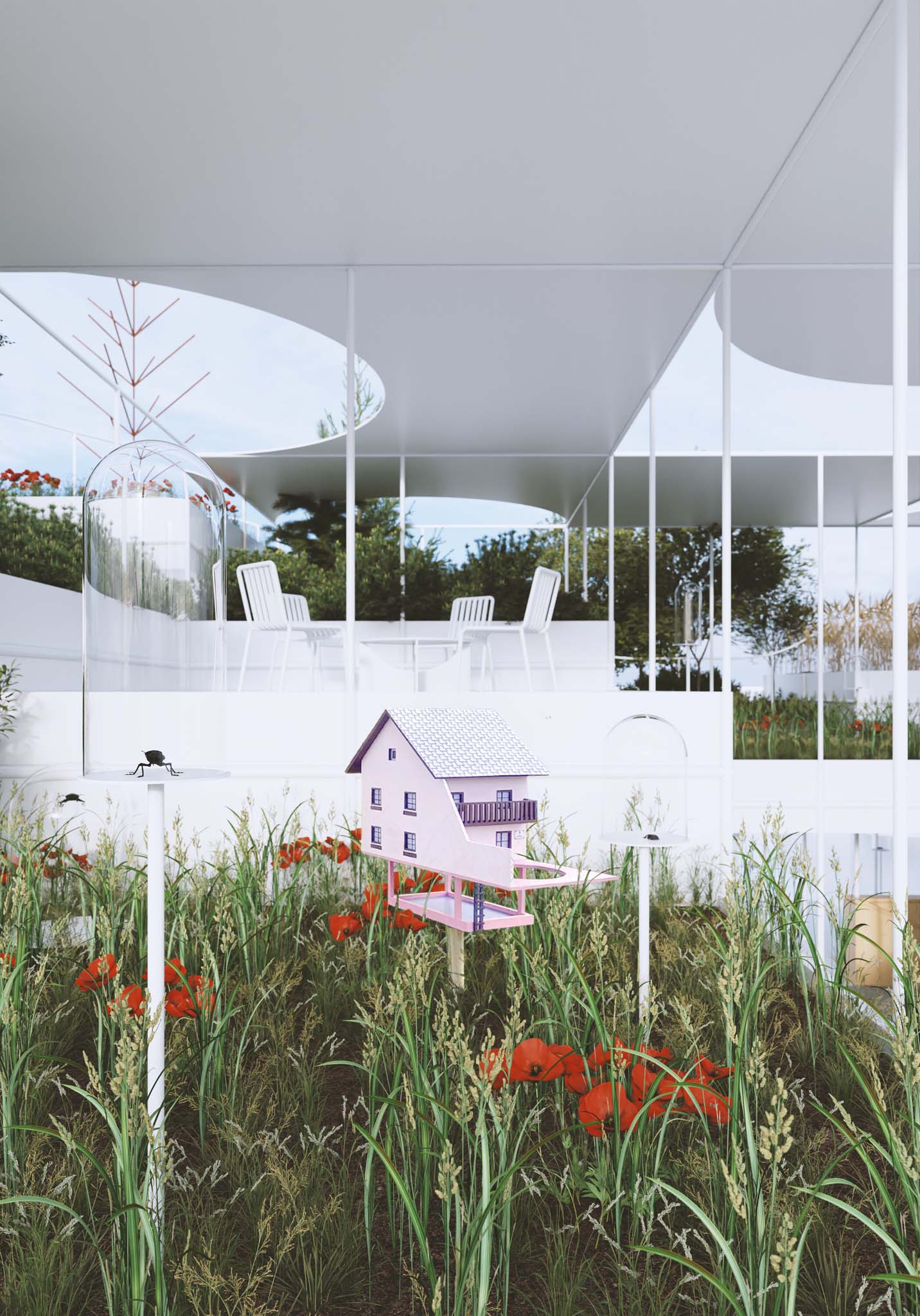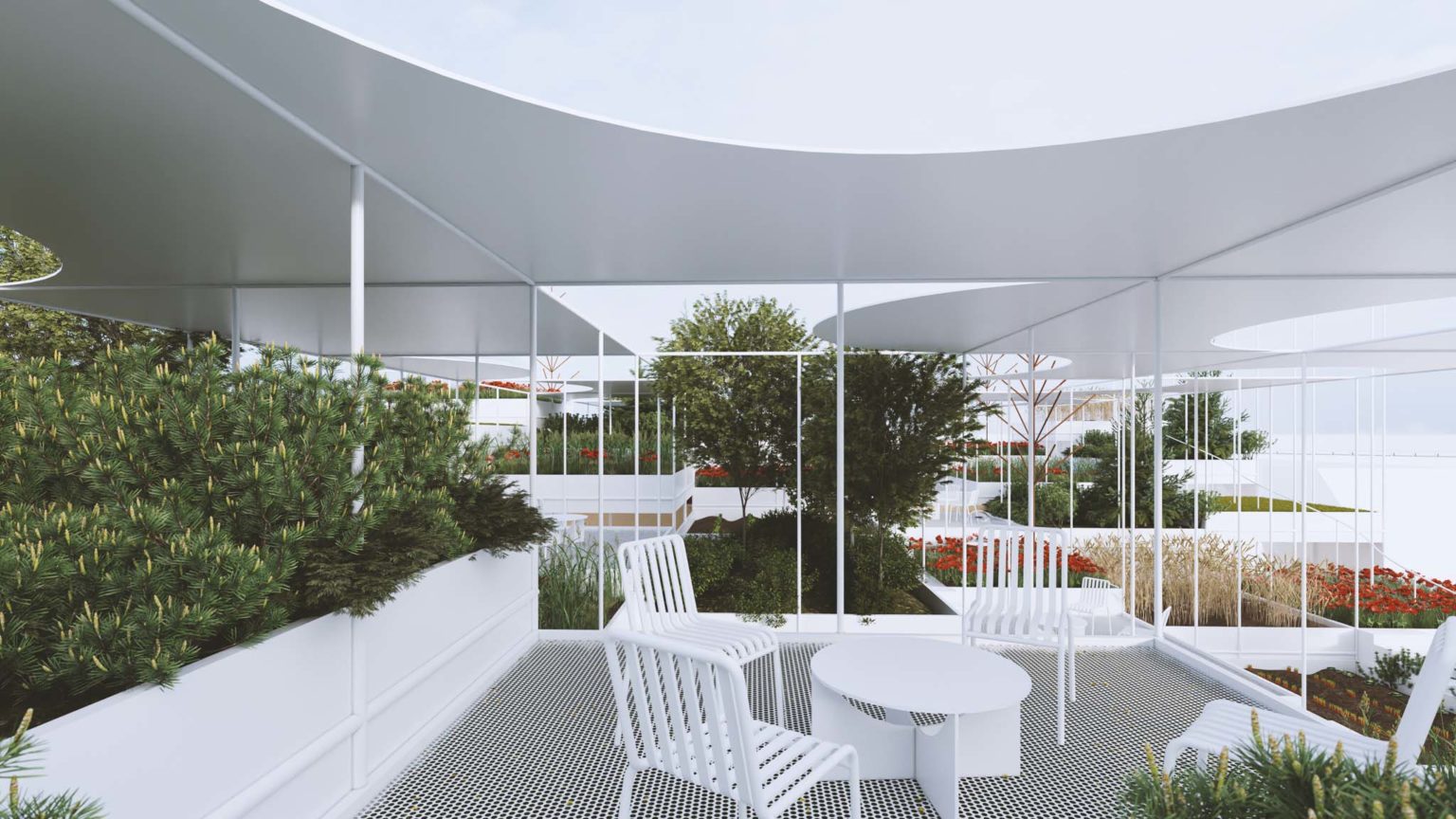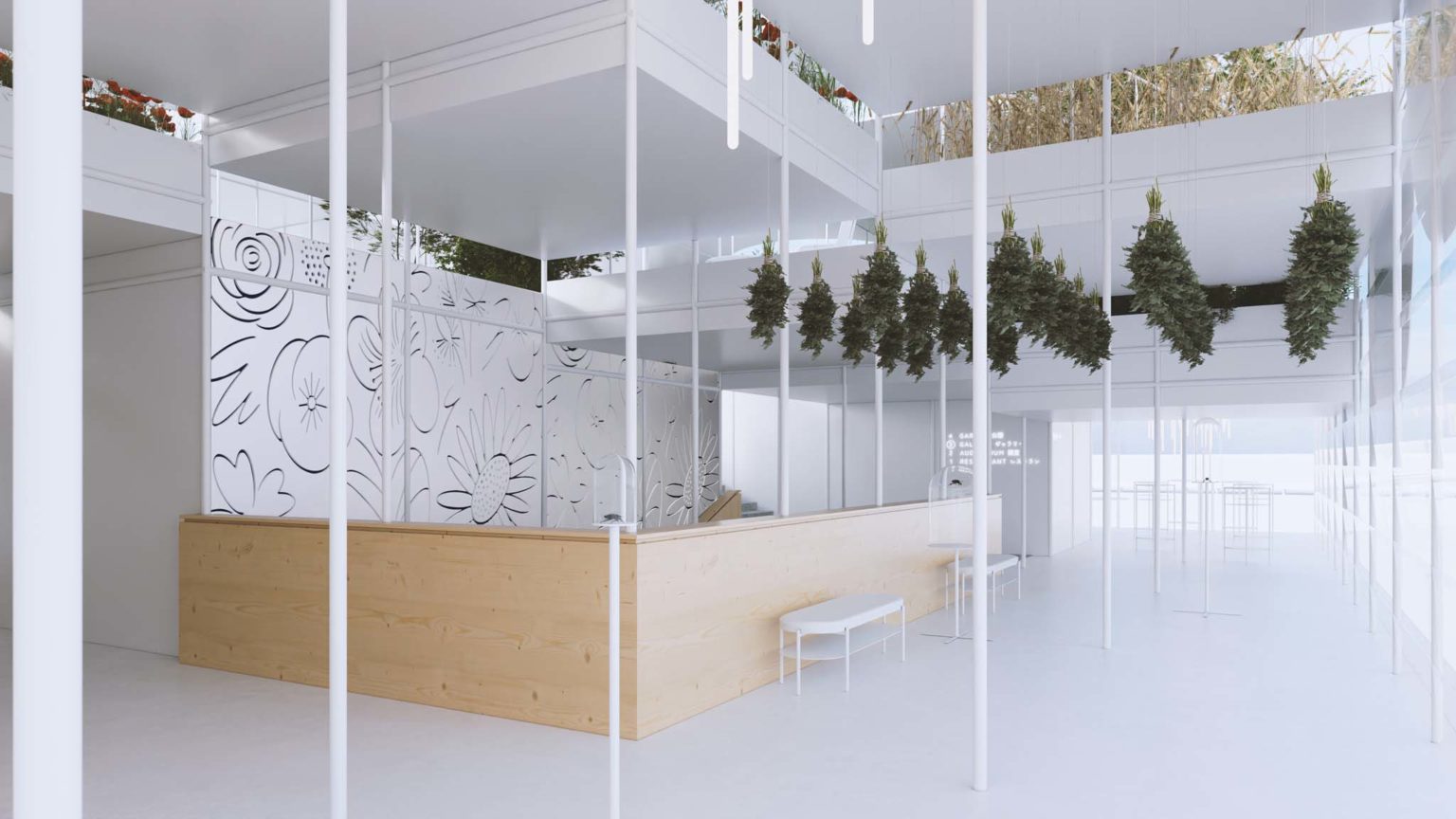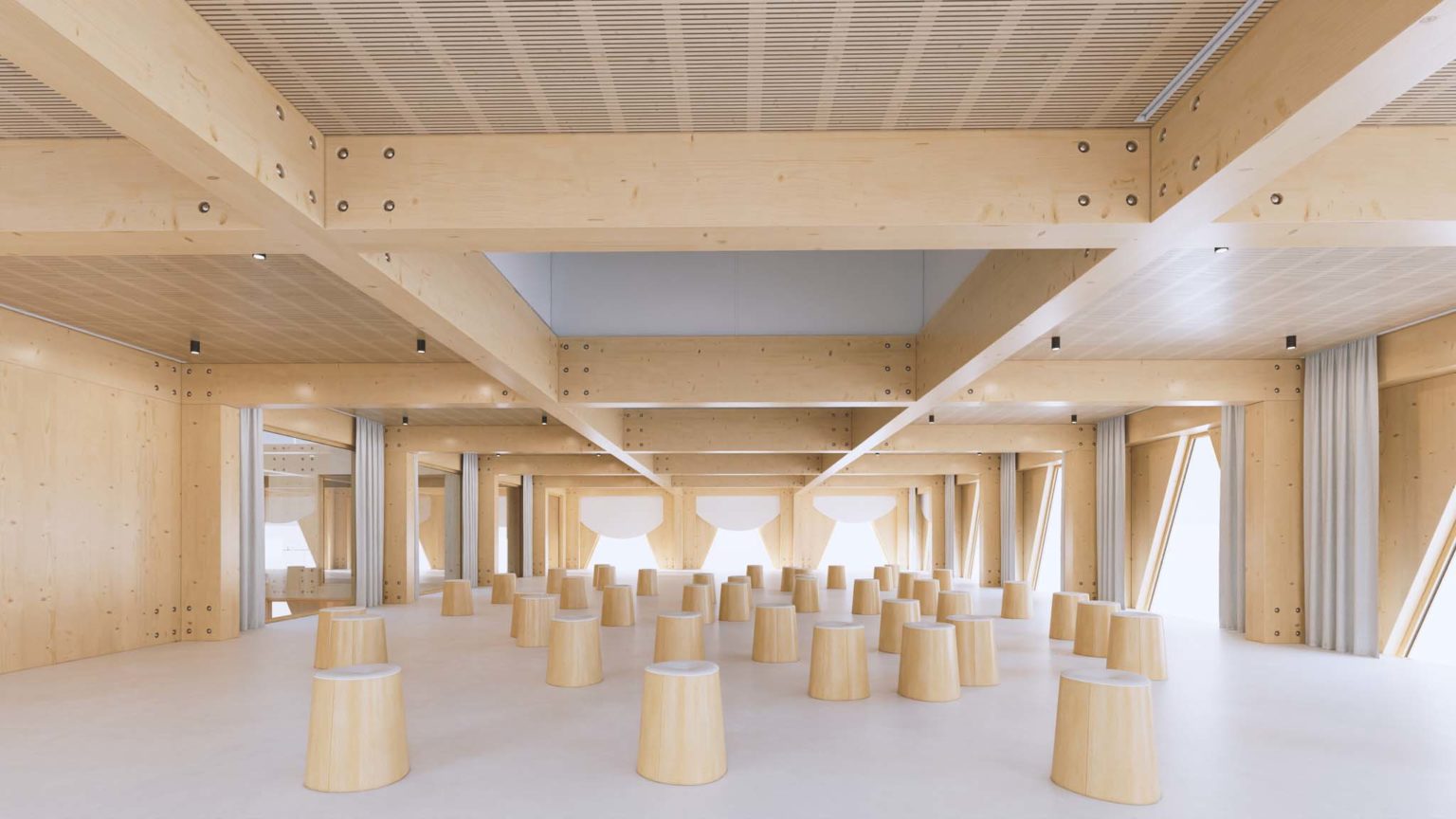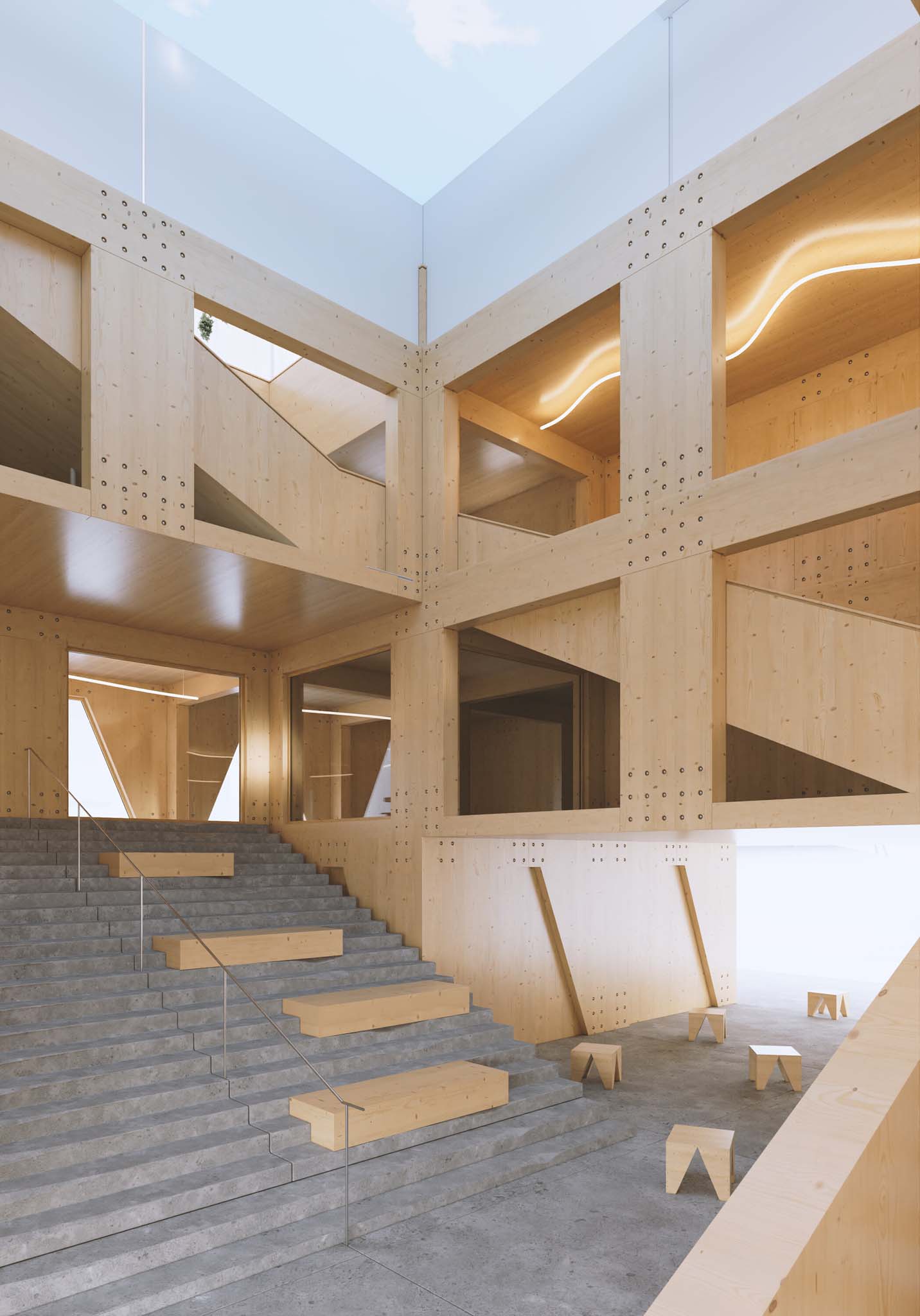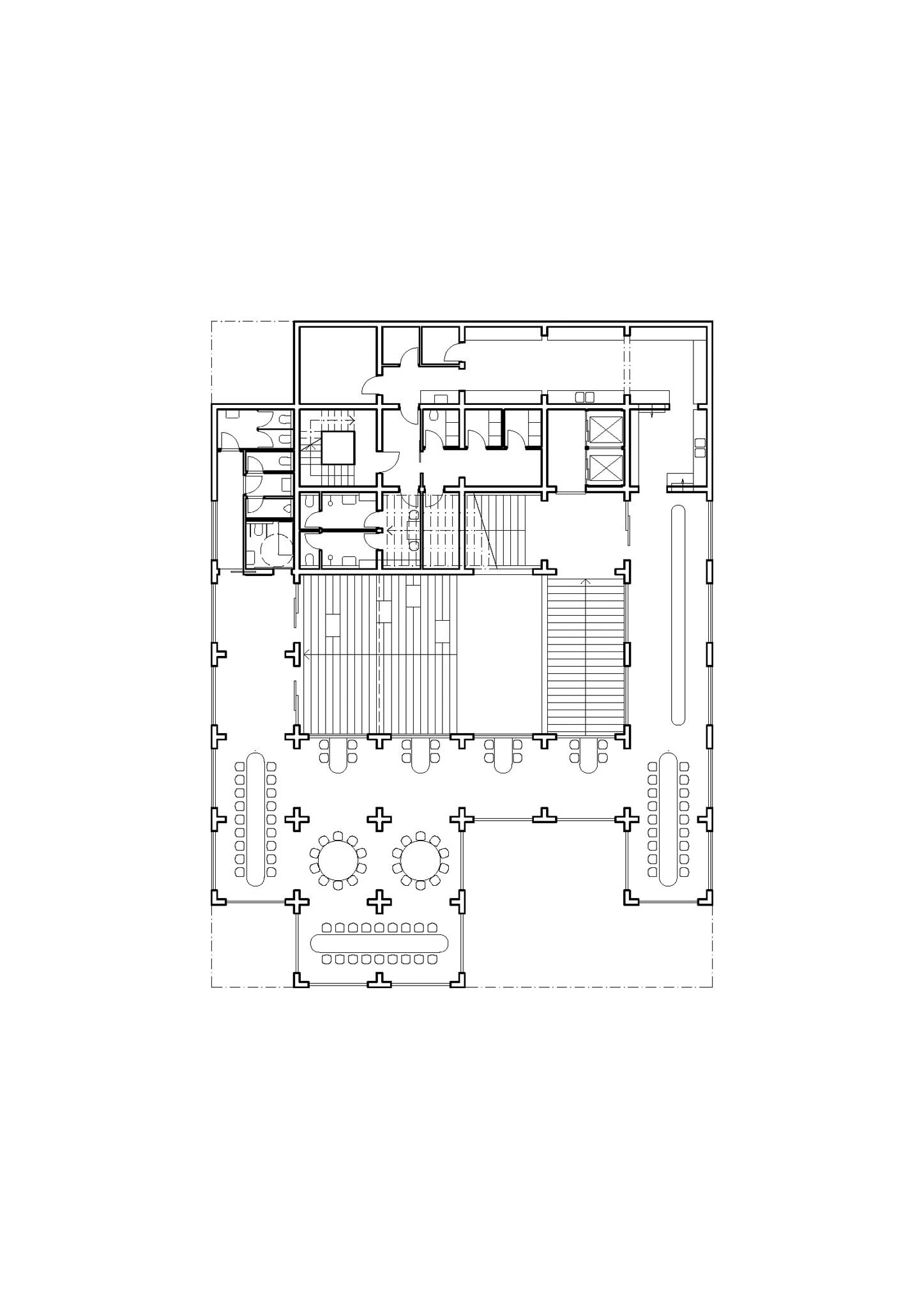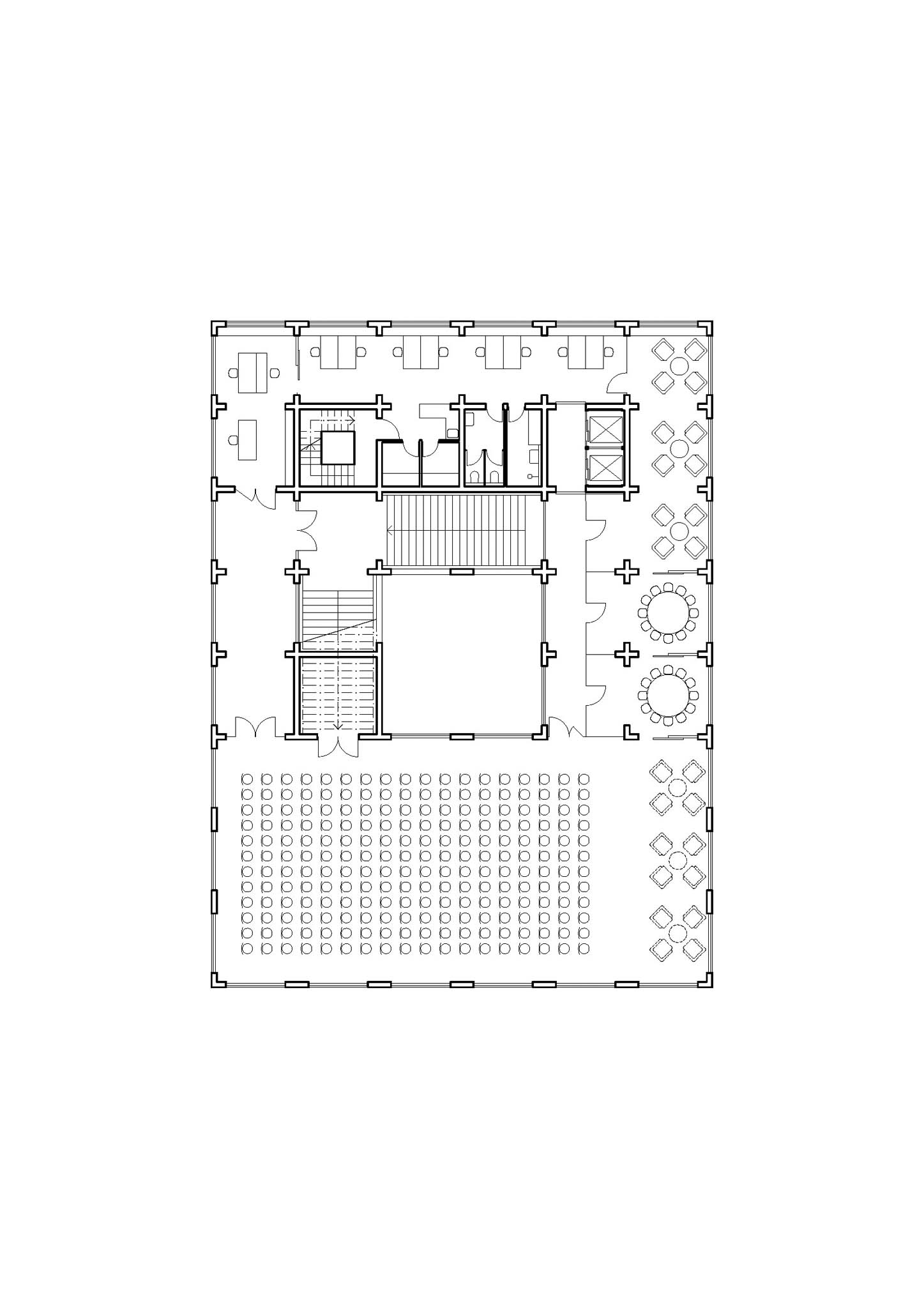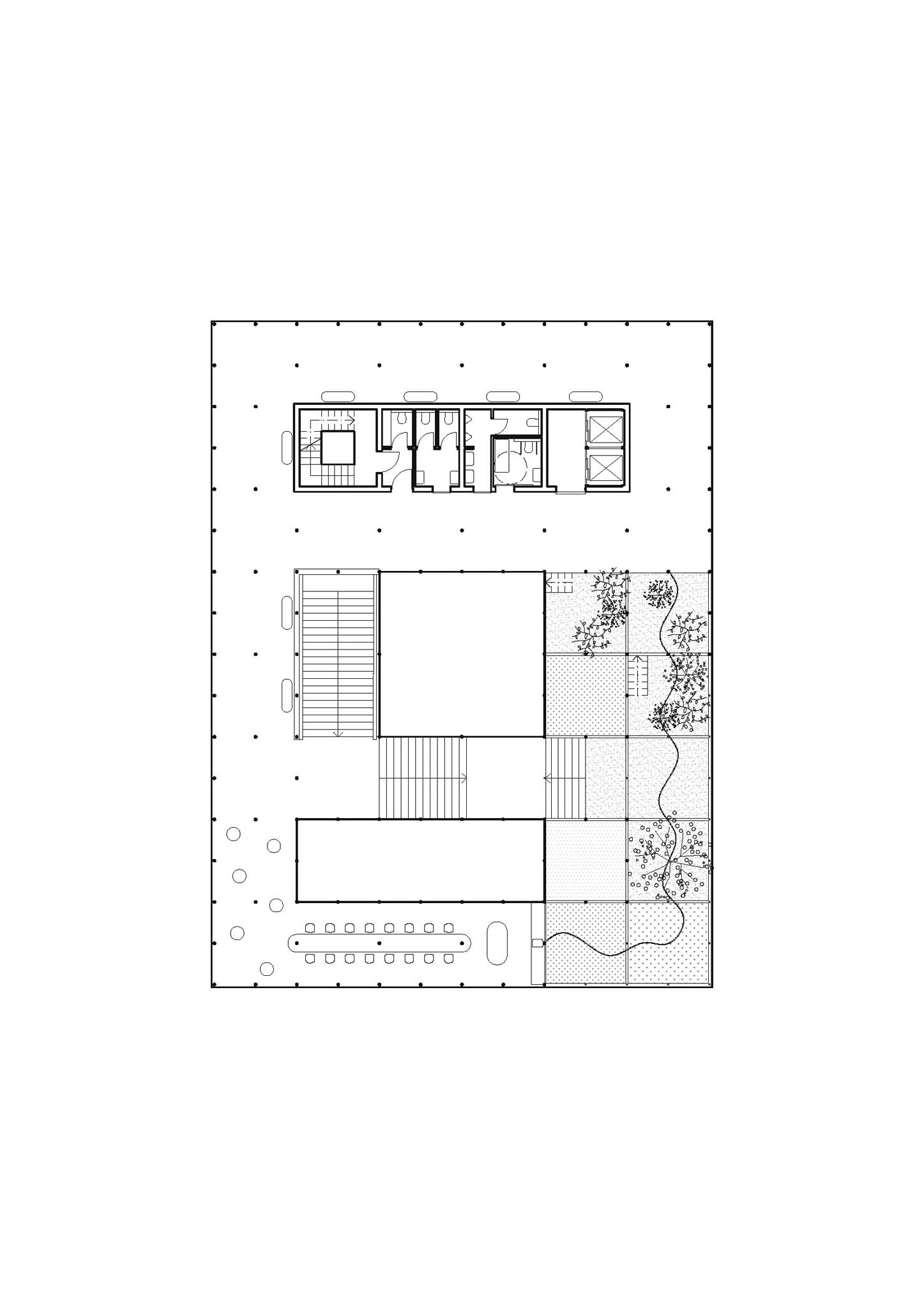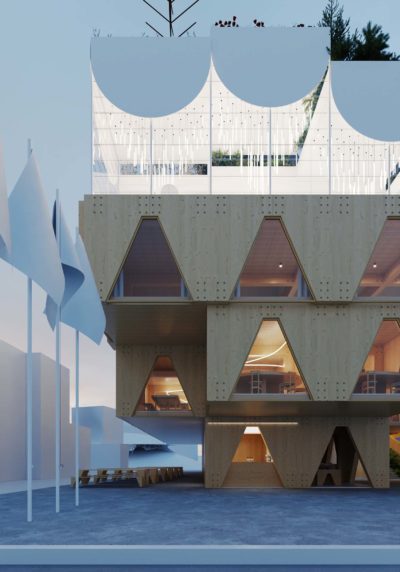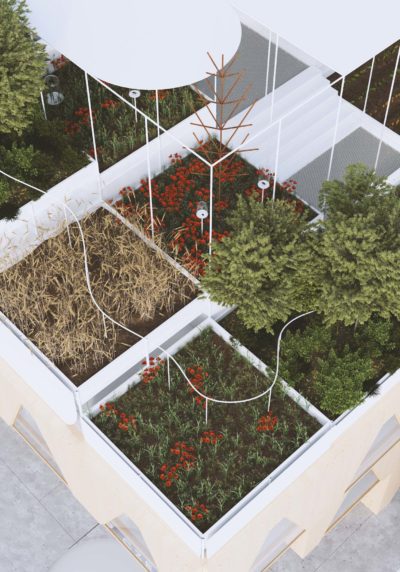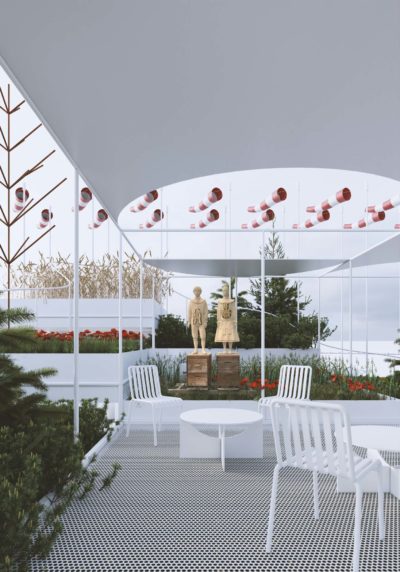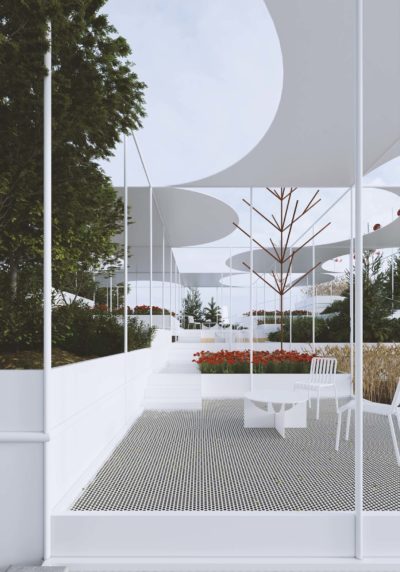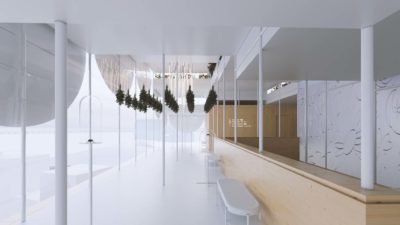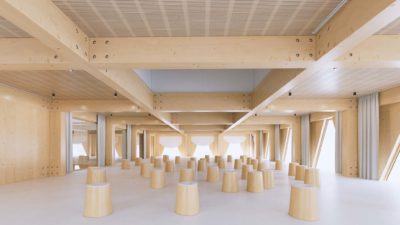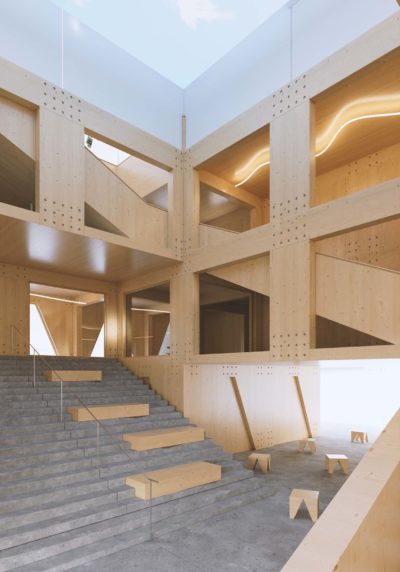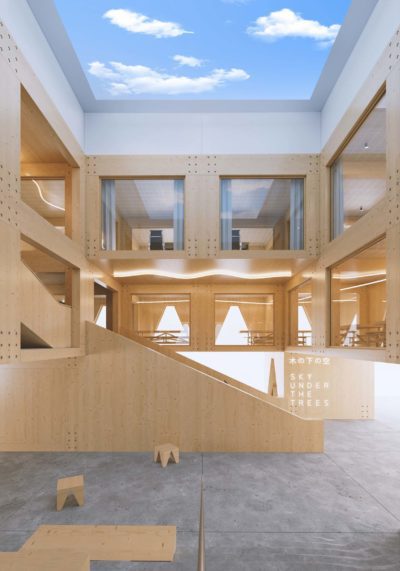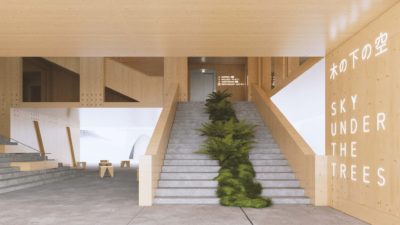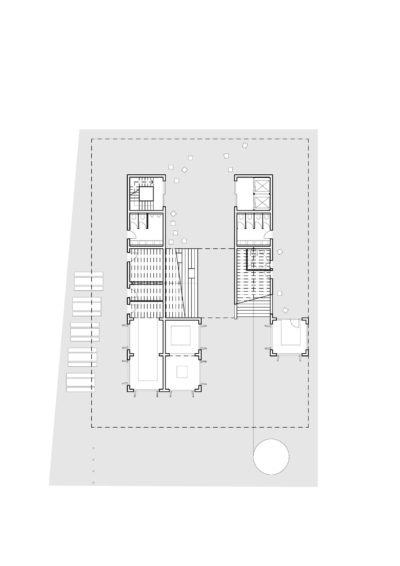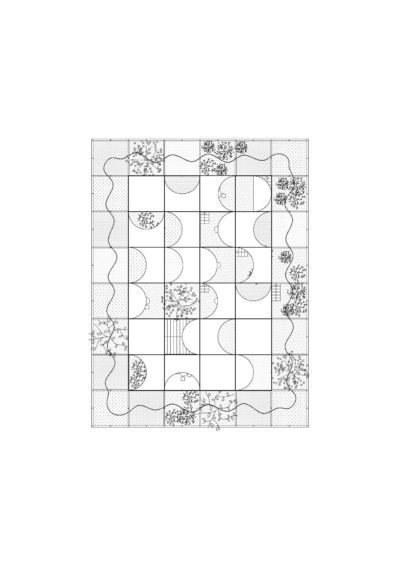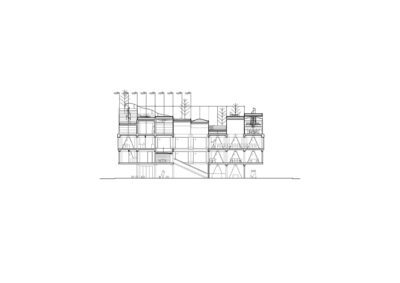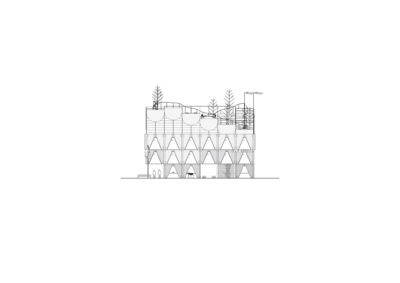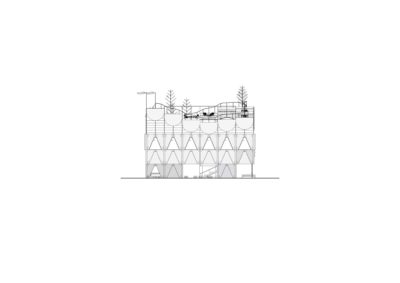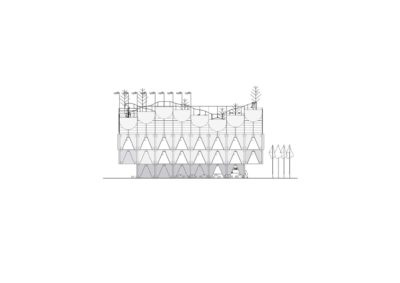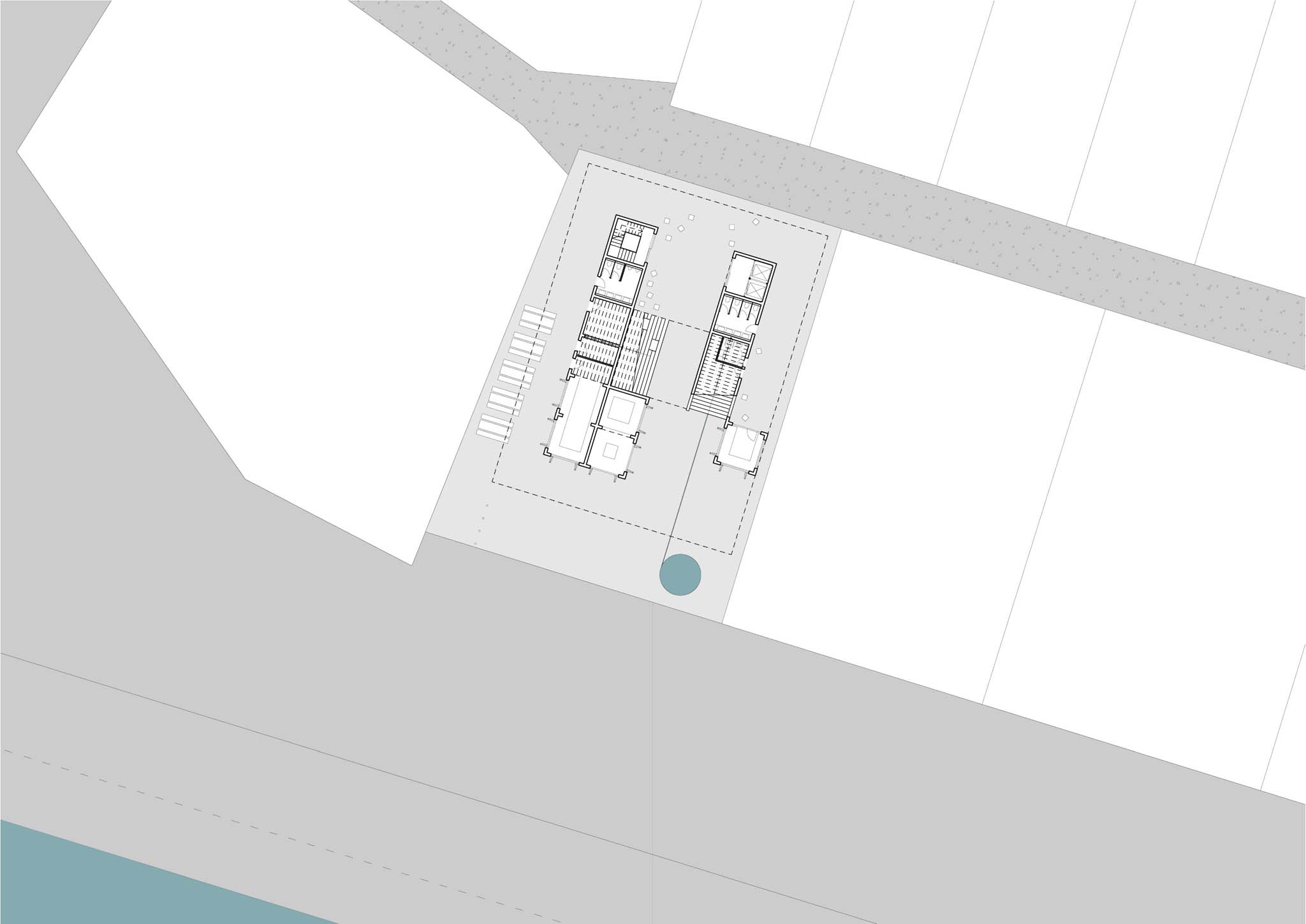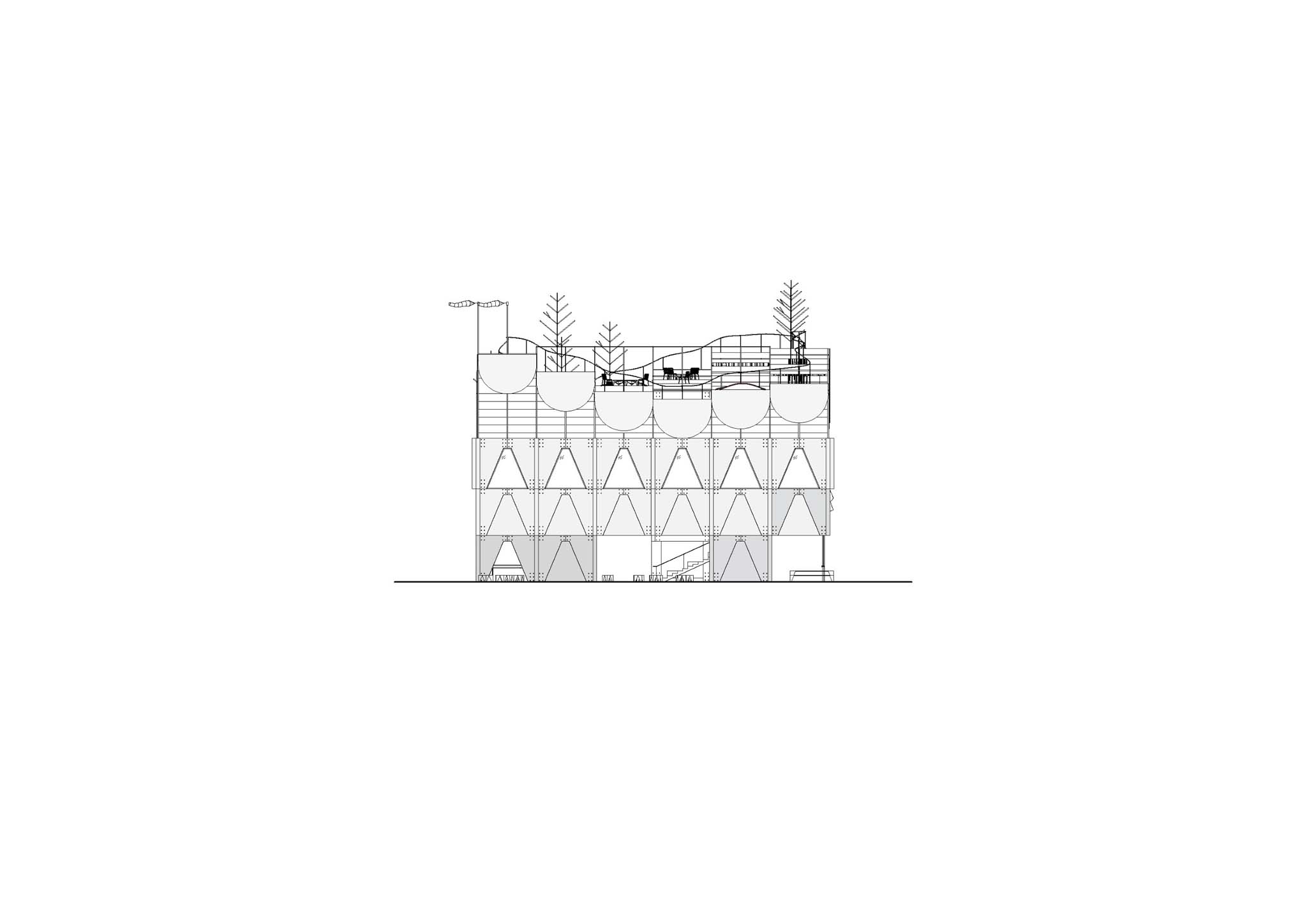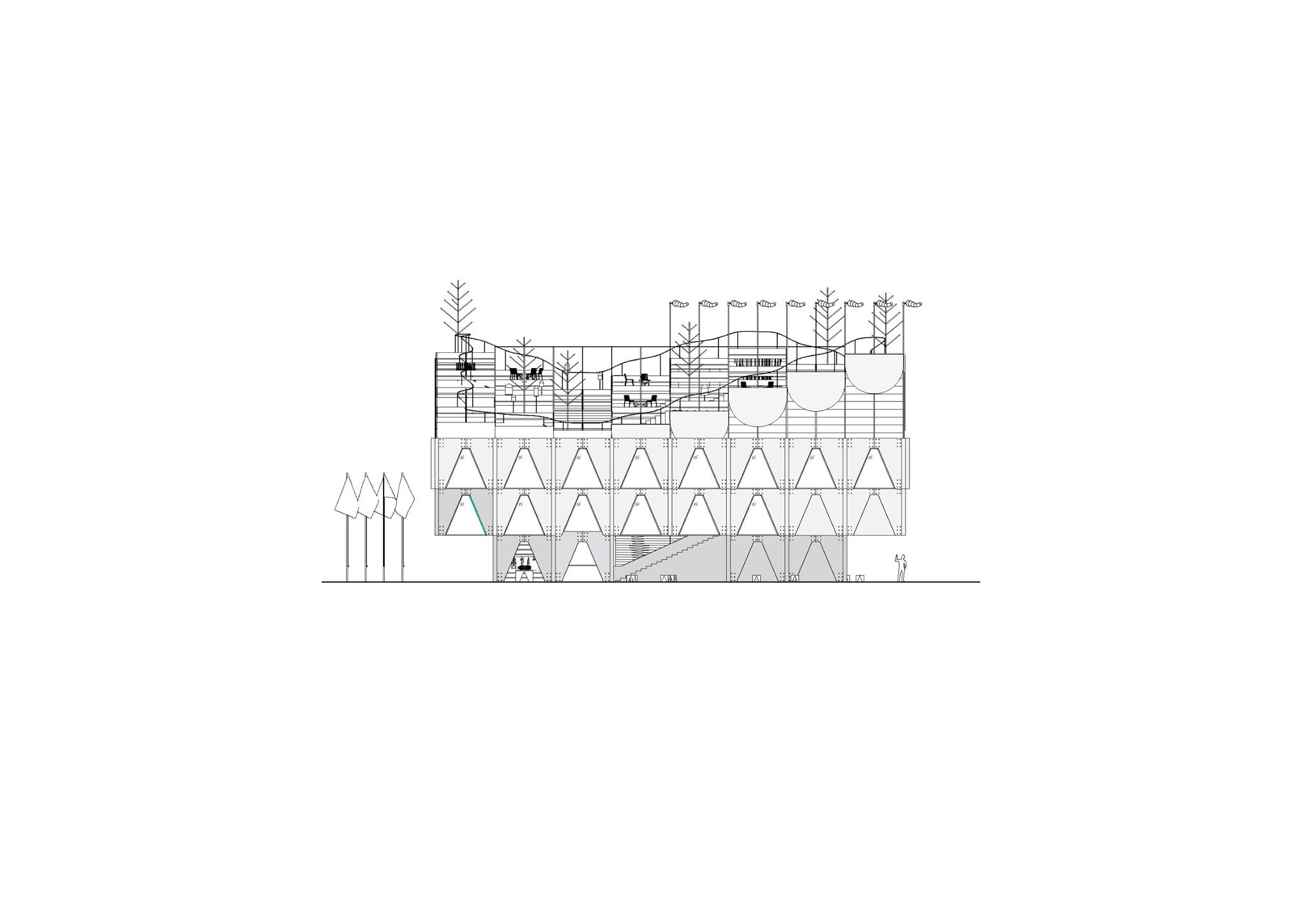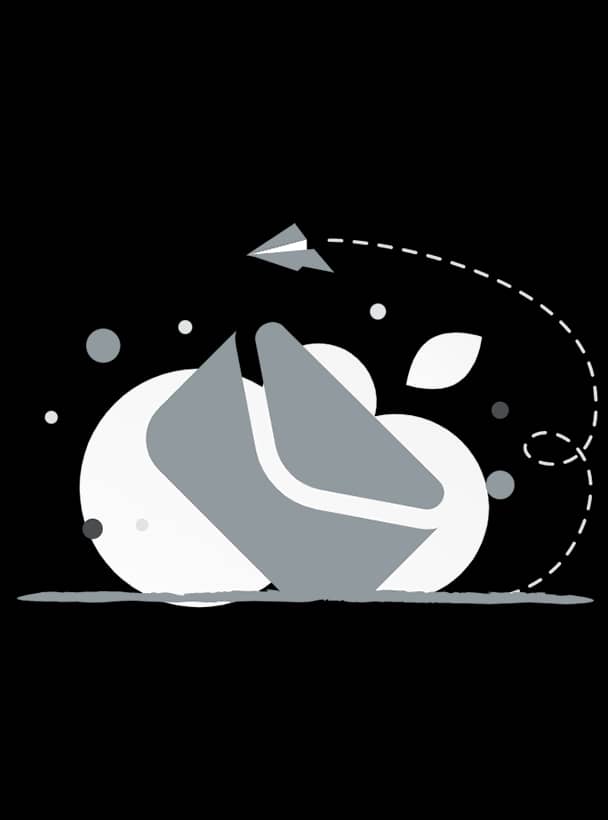Project Credits & Specs:
- Architects: Mjölk architekti
- Images: Mjölk architekti
- Location: Osaka, Japan
- Area: 688 m2
- Year: 2023 –
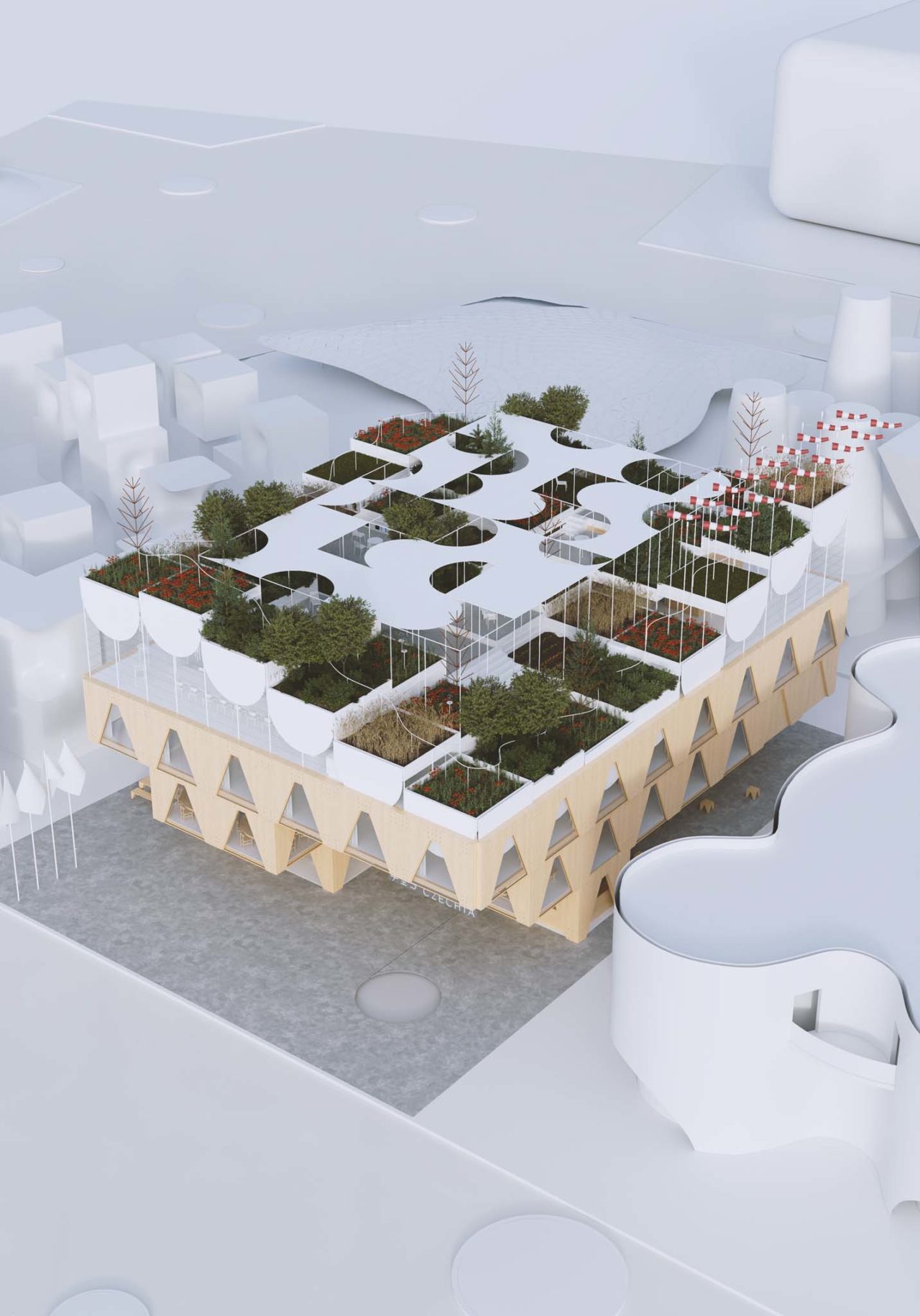
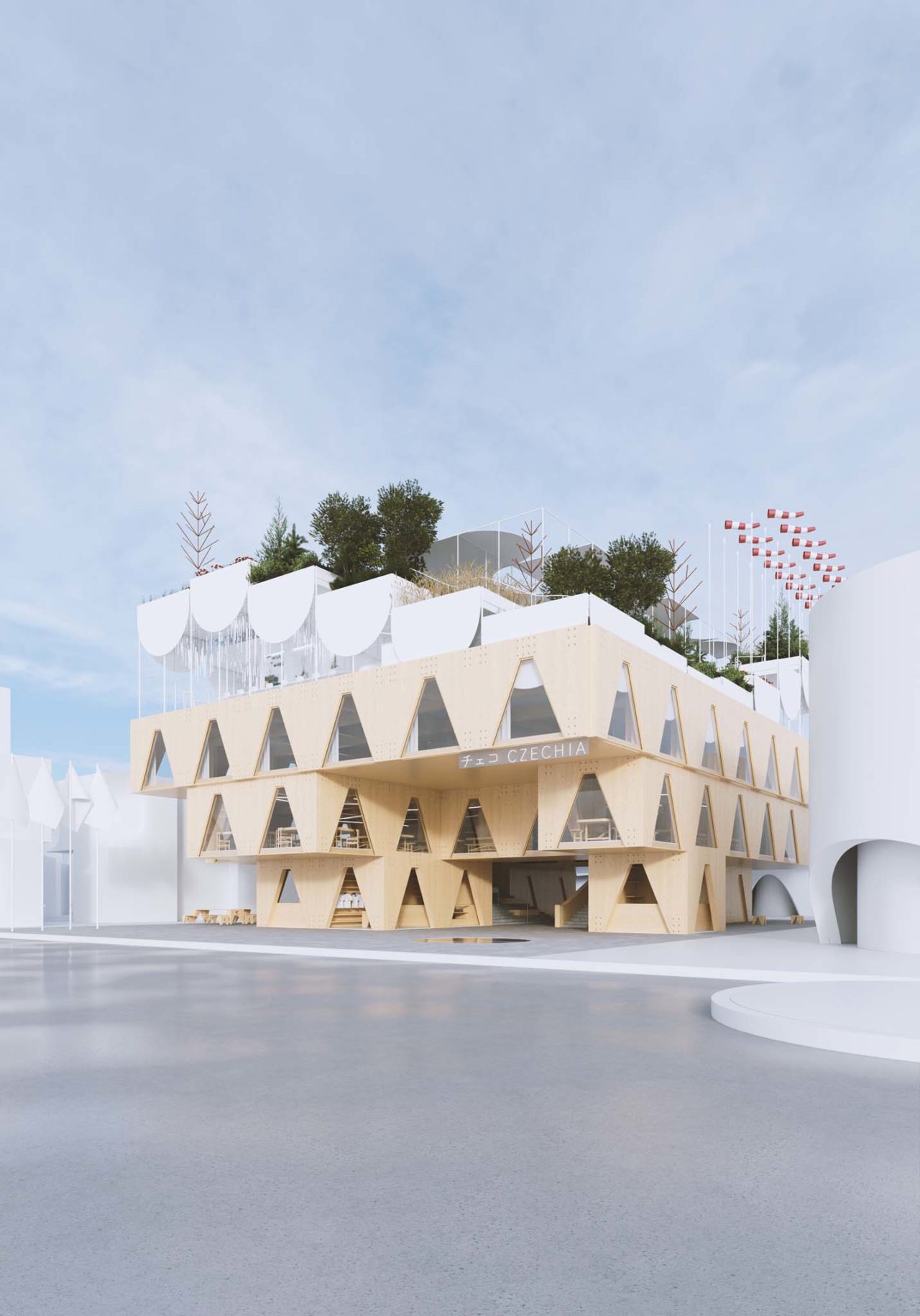
The pavilion of the Czech Republic at the Universal World EXPO 2025 in Osaka, designed by Mjölk architekti, represents the Czech Republic as a place that people have taken care of for more than a thousand years. As a garden in the middle of Europe, which provides people with a place to exercise their immeasurable talent and creativity. Its inhabitants are able to find ways to protect their precious heritage not only for themselves but also for future generations. The pavilion likens the Czech Republic to a shared landscape of millions of cultivated gardens with a single sky above. It shows the history, the present, and the environmental vision of the Czech Republic as a place of human creativity and cares for the shared space.

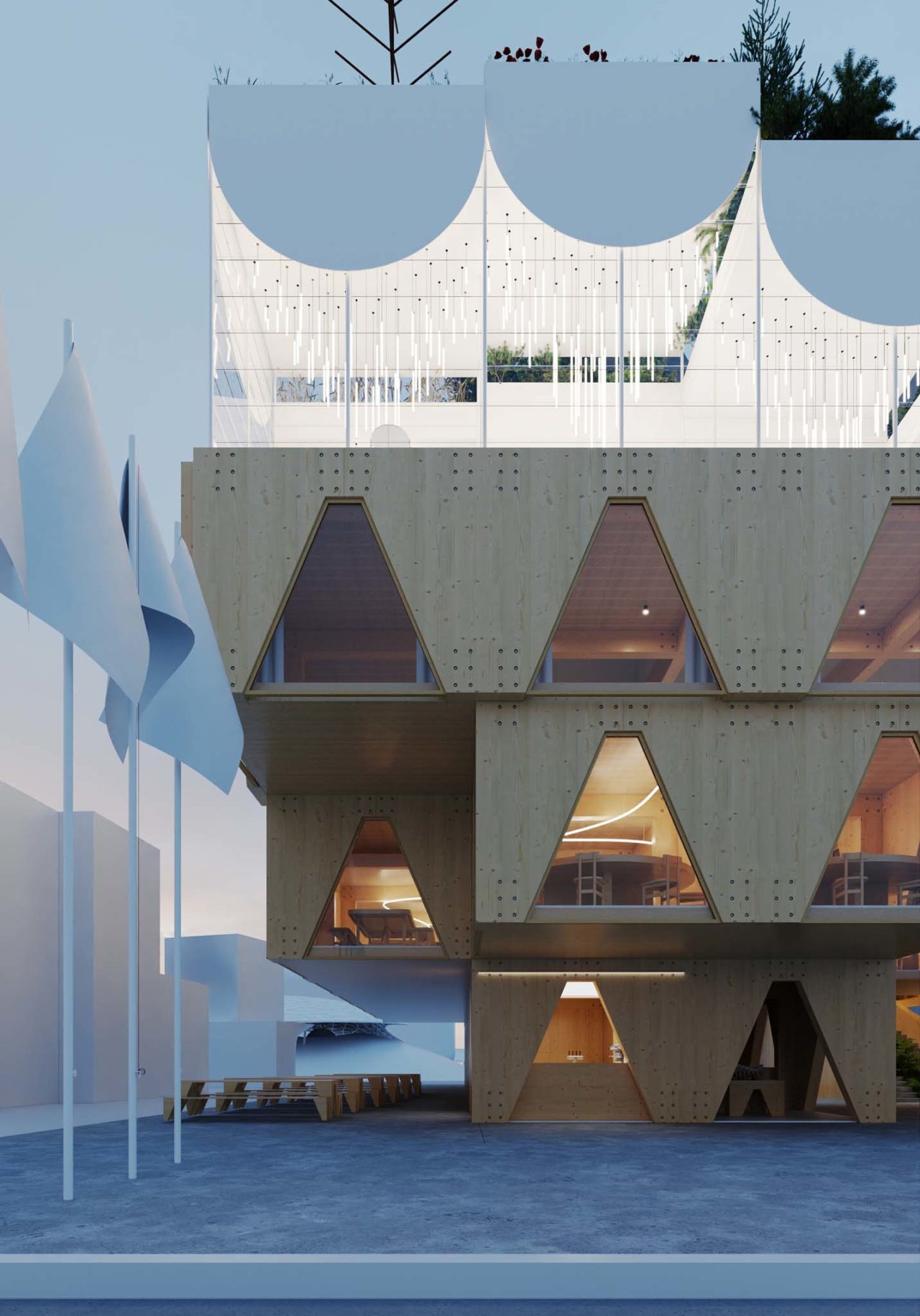
Sky Under the Trees
The concept of the pavilion is based on the idea of a garden in the clouds. The architecture, internal layout, and dramaturgical concept allow visitors to physically and spiritually interact with the central idea of the exhibition. We want to show a relationship with the land, a love of nature as well as contemporary talents to be proud of, and skills in which we excel. There are many great studios in our country that are creating challenging and globally successful computer games. We also have a first-rate ability to predict the weather. These values are linked by the central work of a large-scale procedural projection placed under the garden ceiling, on which a believable impression of a blue sky is created with a program, as clouds change seamlessly and encourage the viewer to imagine. The work is a collaboration between artists, programmers, and meteorologists.
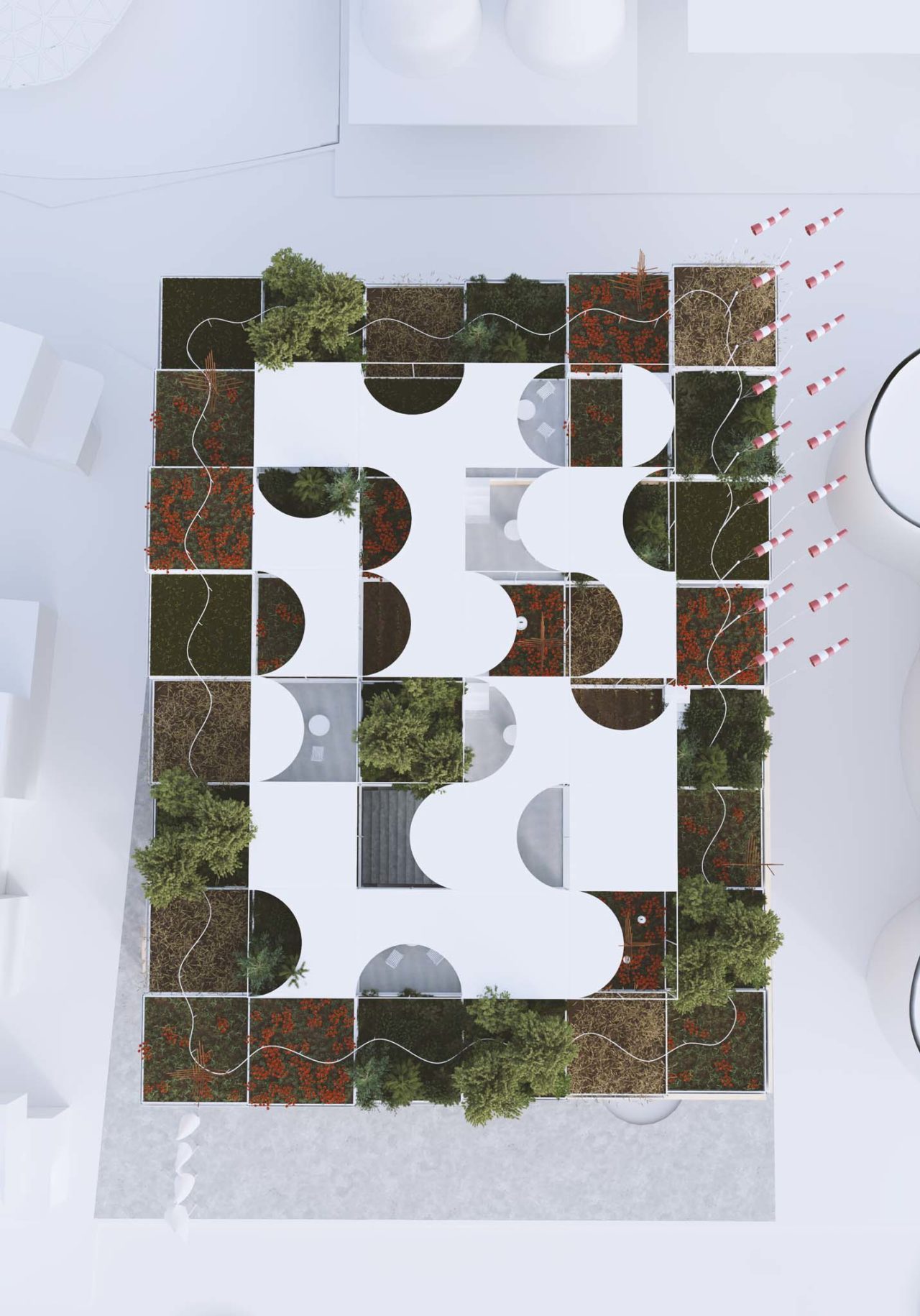
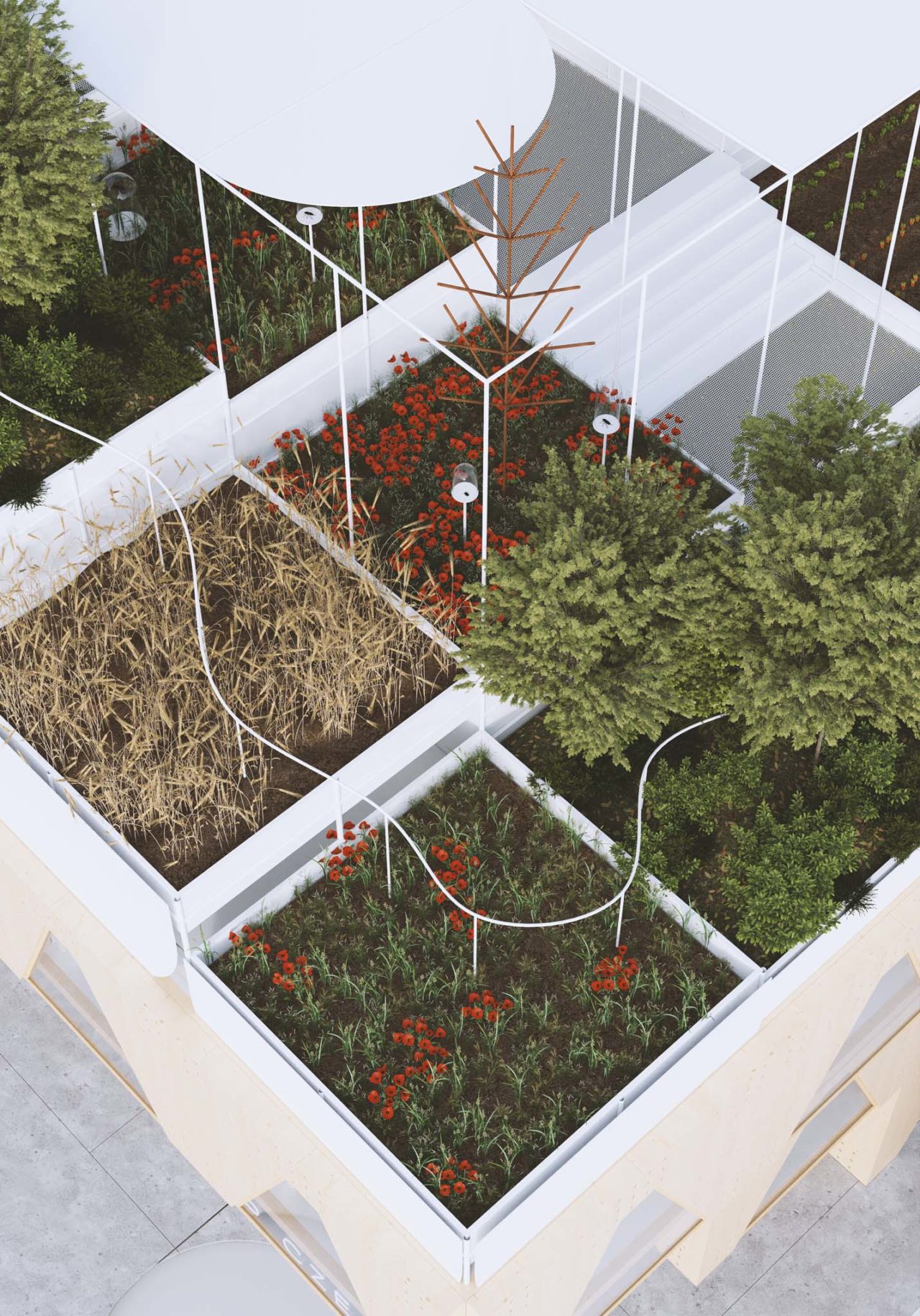
The exhibition combines historical materials and instruments representing a quest to understand natural phenomena with technological and environmental visions on the theme of landscape care and sustainability. Visitors thus see side-by-side measuring instruments from Prague’s Klementinum dating back to the mid-18th century and a recent discovery by Brno scientists in the field of bioluminescent technology, which enables plants to produce light. Participants engage in the story through interactive elements, and educational and gaming technologies. The purpose of the exhibition is also to present Czech art in a broader context and therefore also includes works by Czech designers, glassmakers, architects, or even sound installations and musical compositions.
Architectural Design
The pavilion represents a cloud, hovering over the heads of visitors, who are drawn into the heights of the garden. On the way up, they are accompanied by a stream fed by rainfall, of which there is no shortage in Osaka. The pavilion’s interior engulfs visitors, allowing a view of the sky created by the projection. The ground floor is a public space with a covered atrium. Two staircases connect the entrance area with the second floor. Individual unique 3D-printed steps form a micro landscape right in the middle of the building, a touch of nature in an orthogonal system of wooden columns and panels. The second floor is dedicated to Czech cuisine, and the way the interior is arranged encourages interpersonal contact. Above the gastro corner is a multifunctional auditorium that is actively integrated into the curated dramaturgy of the pavilion, a multimedia stop on the way up.
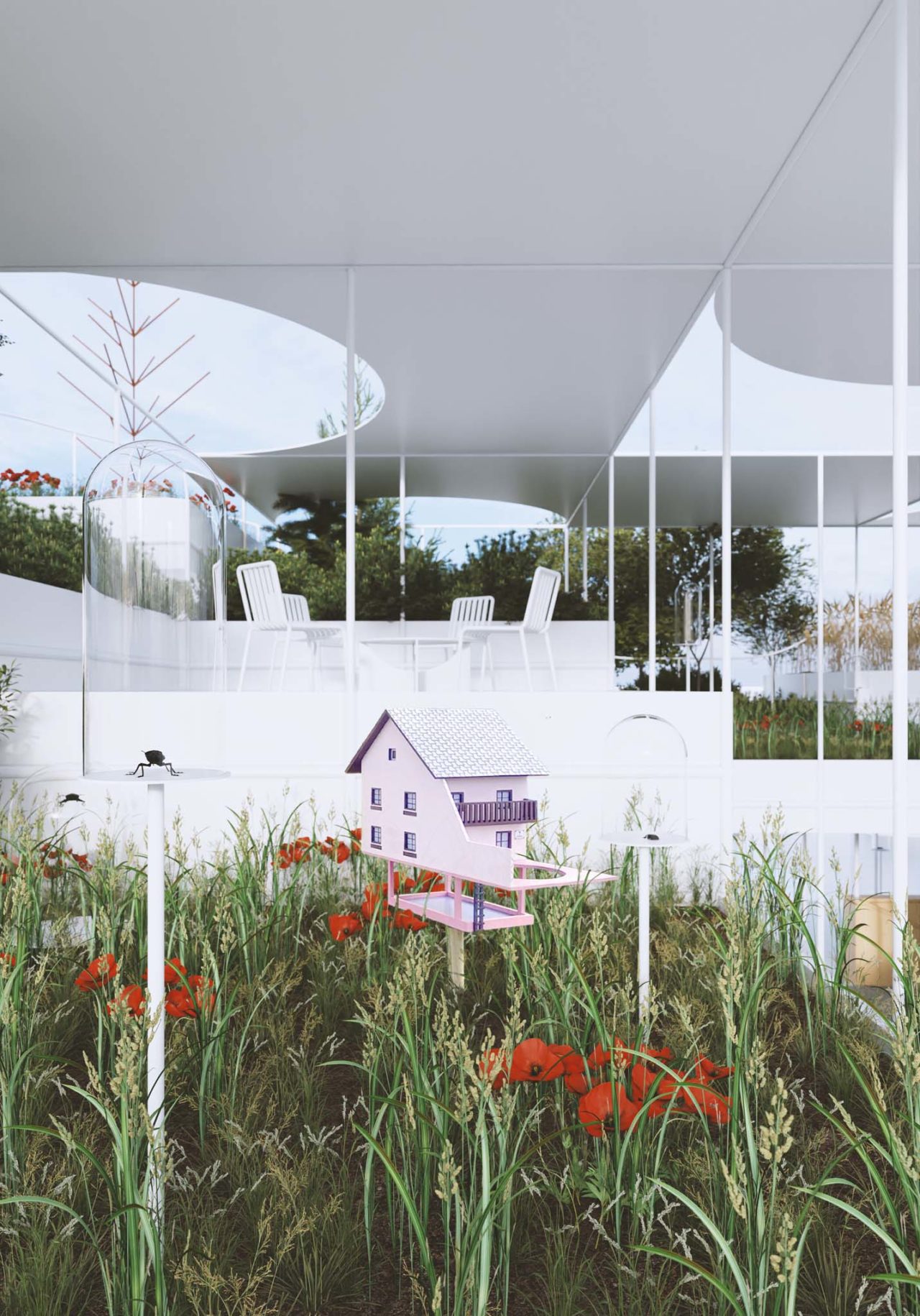

On the last level of the building, two worlds – the sky and the garden – interpenetrate. The sky under the garden roof is both an exhibition space and a venue for private events. In the delicate web of the load-bearing structure, artistic artifacts intermingle with functional objects. The indoor exhibition has direct access to the garden terraces. The garden, too, is an exhibition space, a territory for children’s play, and a place where visitors can relax and also contemplate under the trees the direction our fragile world is heading.

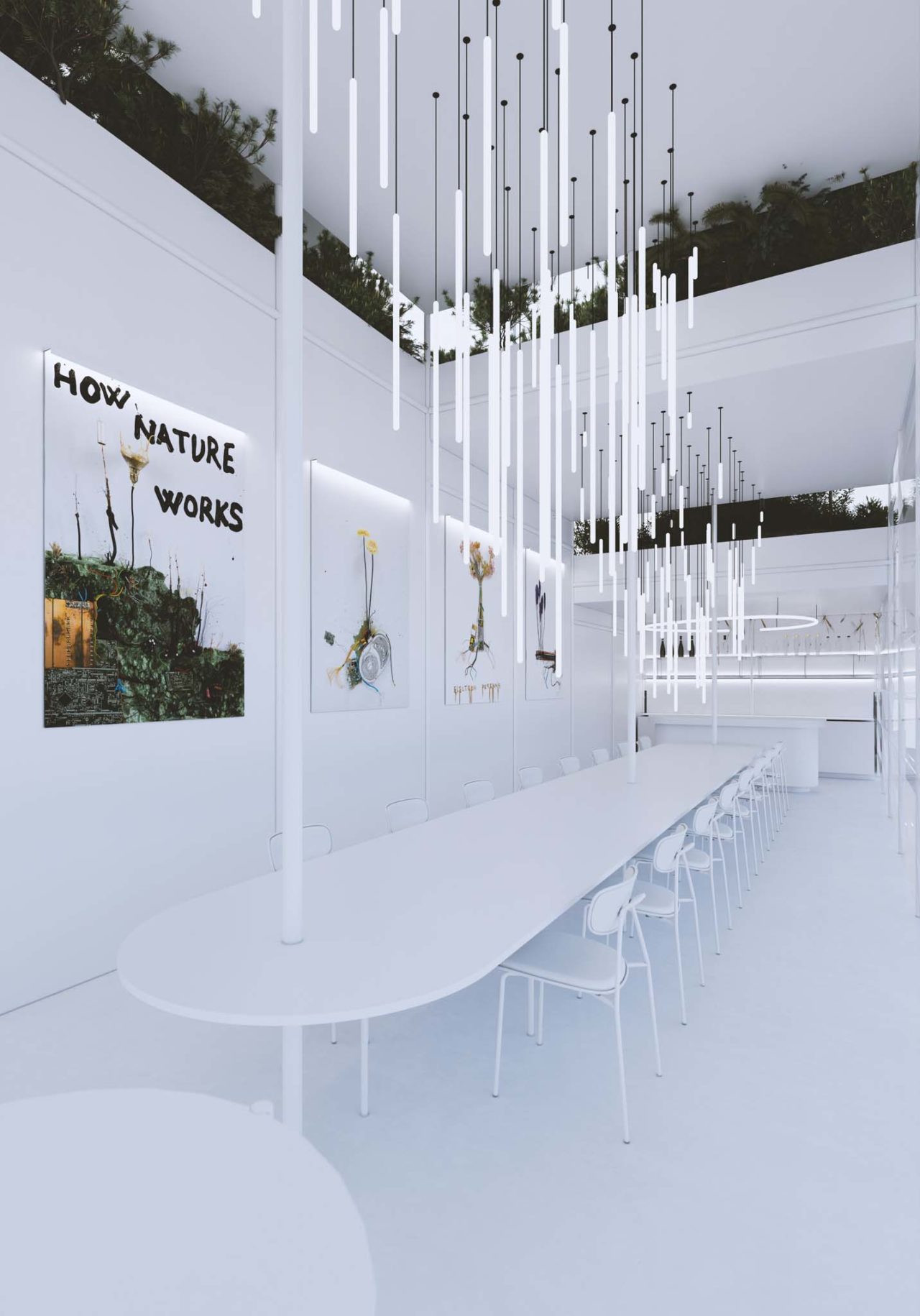
The landscape design of the pavilion is a reminiscence of the mosaic structure of the Czech landscape. The roof landscape of the pavilion is varied, with different heights showing the diversity of surfaces, the structure of stems, trunks, and branches, the texture of leaves, and the changing colors during the seasons. On the roof, a small brook springs up and weaves its way through the pavilion, ending in a pool in the parterre. The surface mirrors the clouds, the visitors, and the entire exhibition, reinforcing the idea of tying people’s lives to the weather, the cycle of the year, and life.
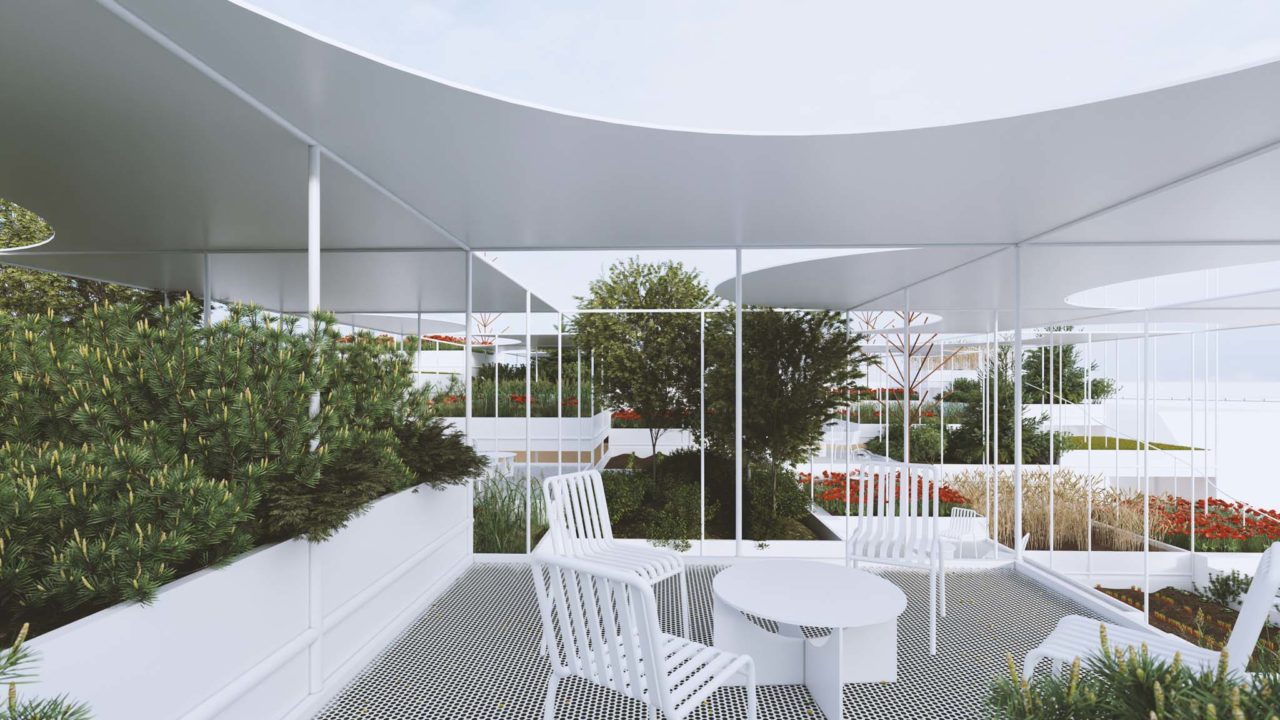
The central motif of the garden is also transferred into the form of contemporary floral illustrations. The abstracted flowers of marigolds, sunflowers, morning glories, poppies, four-leaf clovers, and Brooklily leaves are depicted with a delicate stroke of a line, loosely referring to the technique of Japanese calligraphy and the delicate illustrations in Karel Čapek’s The Gardener’s Year.
The principle of the design is a building that is not just a box for exhibition pieces. The building is meant to represent the Czech Republic as a work of art, therefore the design reflects contemporary building technologies and traditional Czech know-how. This philosophy is also reflected in the interiors, which are furnished with high-quality Czech products and the leftover material from the CLT panels.
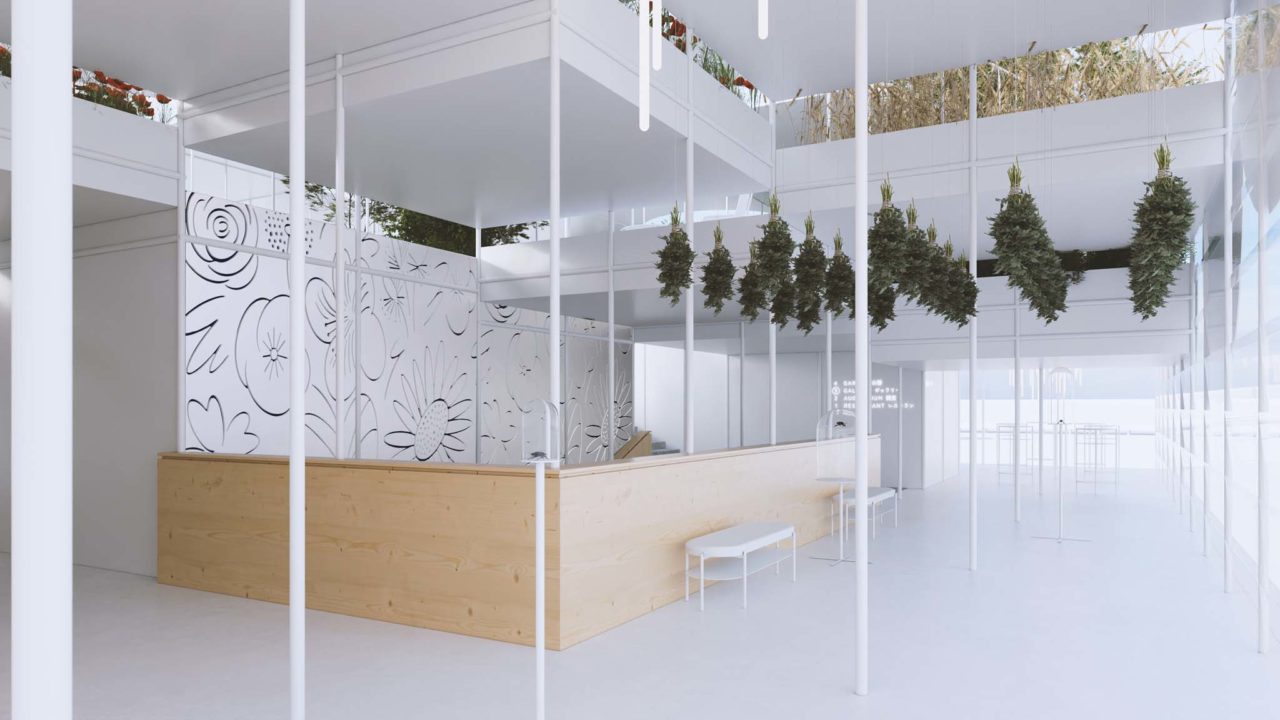
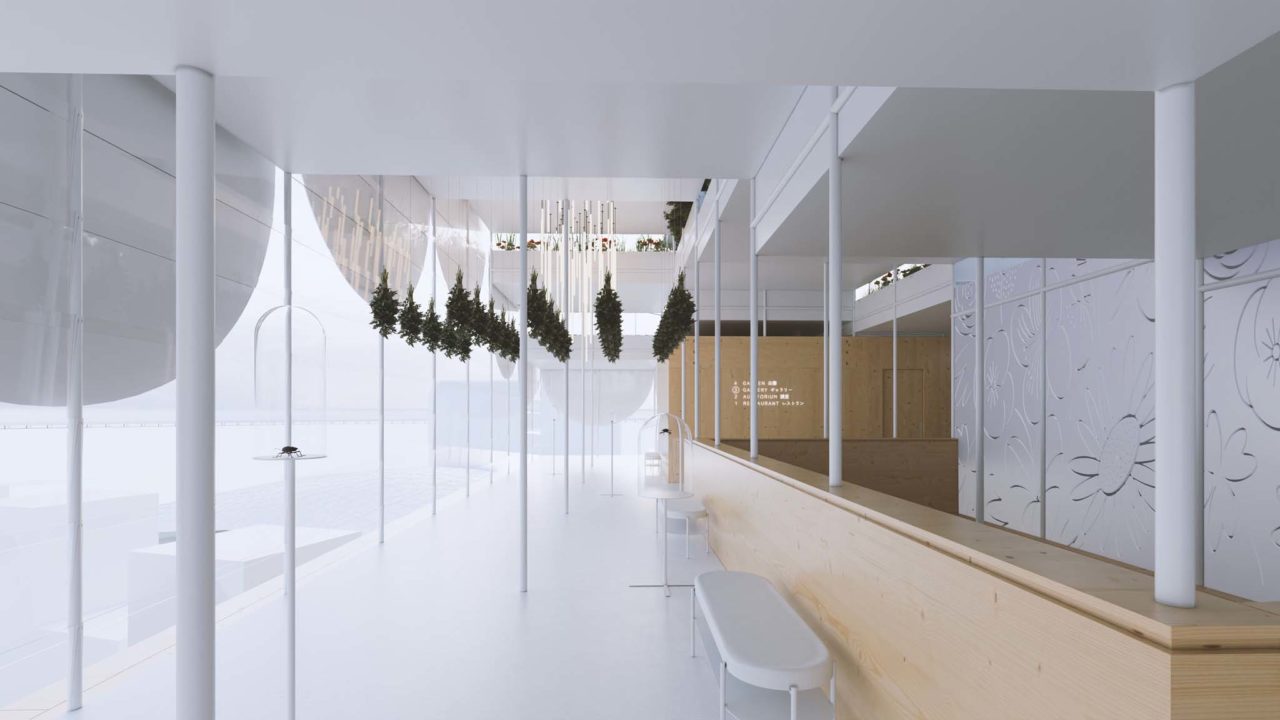
Environmentally Friendly Operation and Transport
The pavilion is designed as a prefabricated wooden building made of glued timber and wooden panels laid in a square grid. Emphasis is placed on premium appearance, optimum thicknesses, high load-bearing capacities, and precise joints. The building envelope consists of CLT panels in combination with double glazing. The gallery space under the garden is clad with laminated glass slats. The walking surface in the parterre is a brushed concrete slab with recycled material from construction debris. Natural light is provided by the glazed parts of the façade and the open atrium.
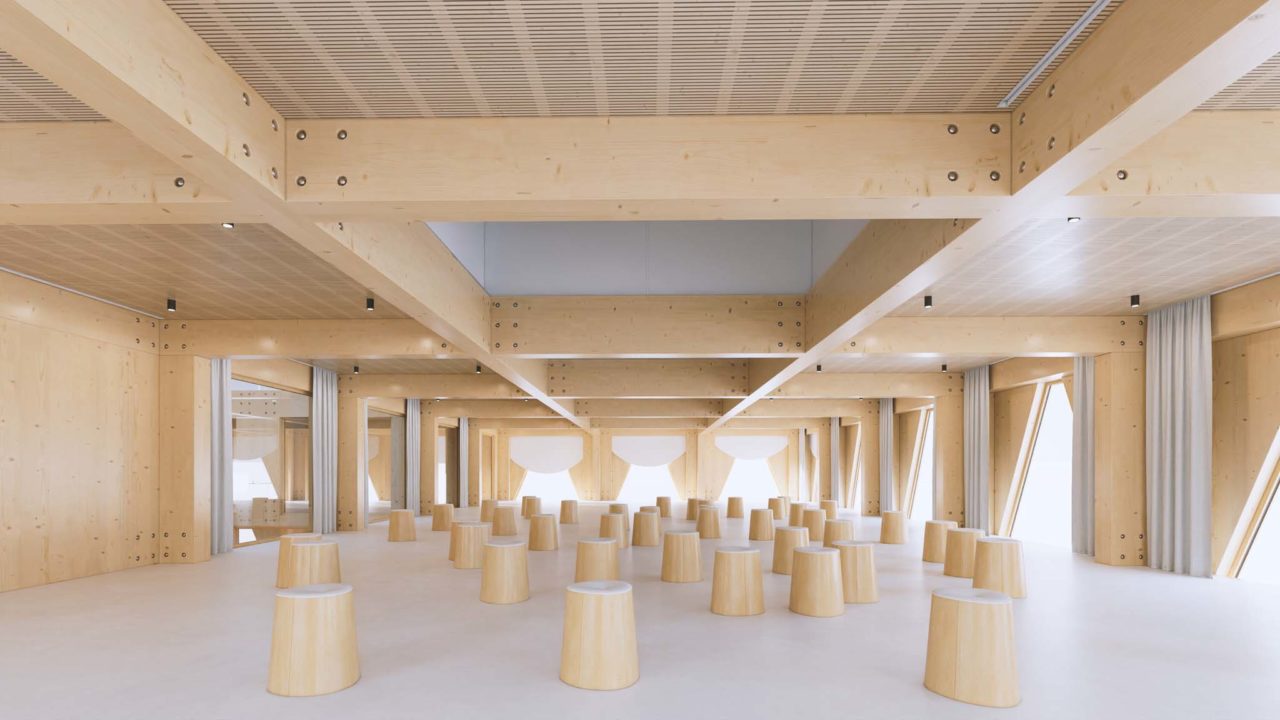

The primary energy source for hot water heating is waste heat from the building cooling and grey water effluent. The green roof serves to improve microclimate, natural cooling, and rainwater harvesting. The water is filtered through the root system of the green roof and further used, among other things, for fine mist sprinkling and central irrigation of the roof garden. The entire building is designed to a passive standard, with a consideration of its possible future dismantling and relocation. The logistics of construction were also taken into account in the design. The panels, beams, and additional structures are designed for easy container transport, assembly, and disassembly.

Materials
The building is designed with a combination of CLT panels and BSH (glued laminated timber) beams, which clearly define its materiality.
The timber structure is complemented by 3D-printed concrete staircases and a subtle steel roof superstructure, which is covered by a ventilated float glass façade system under the living roof. These
materials permeate the entire design. We are not trying to hide them, we are revealing them in their natural beauty.
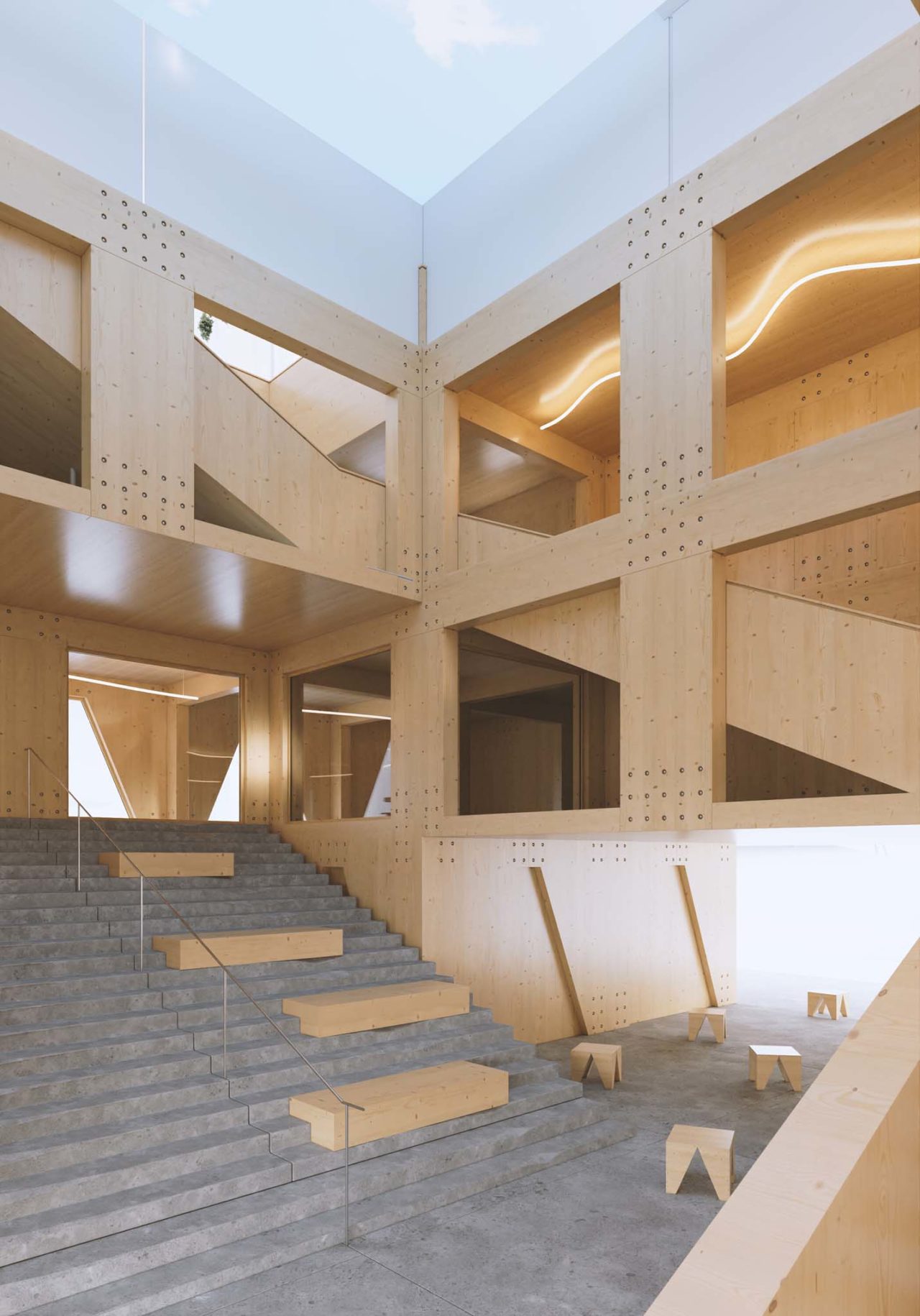
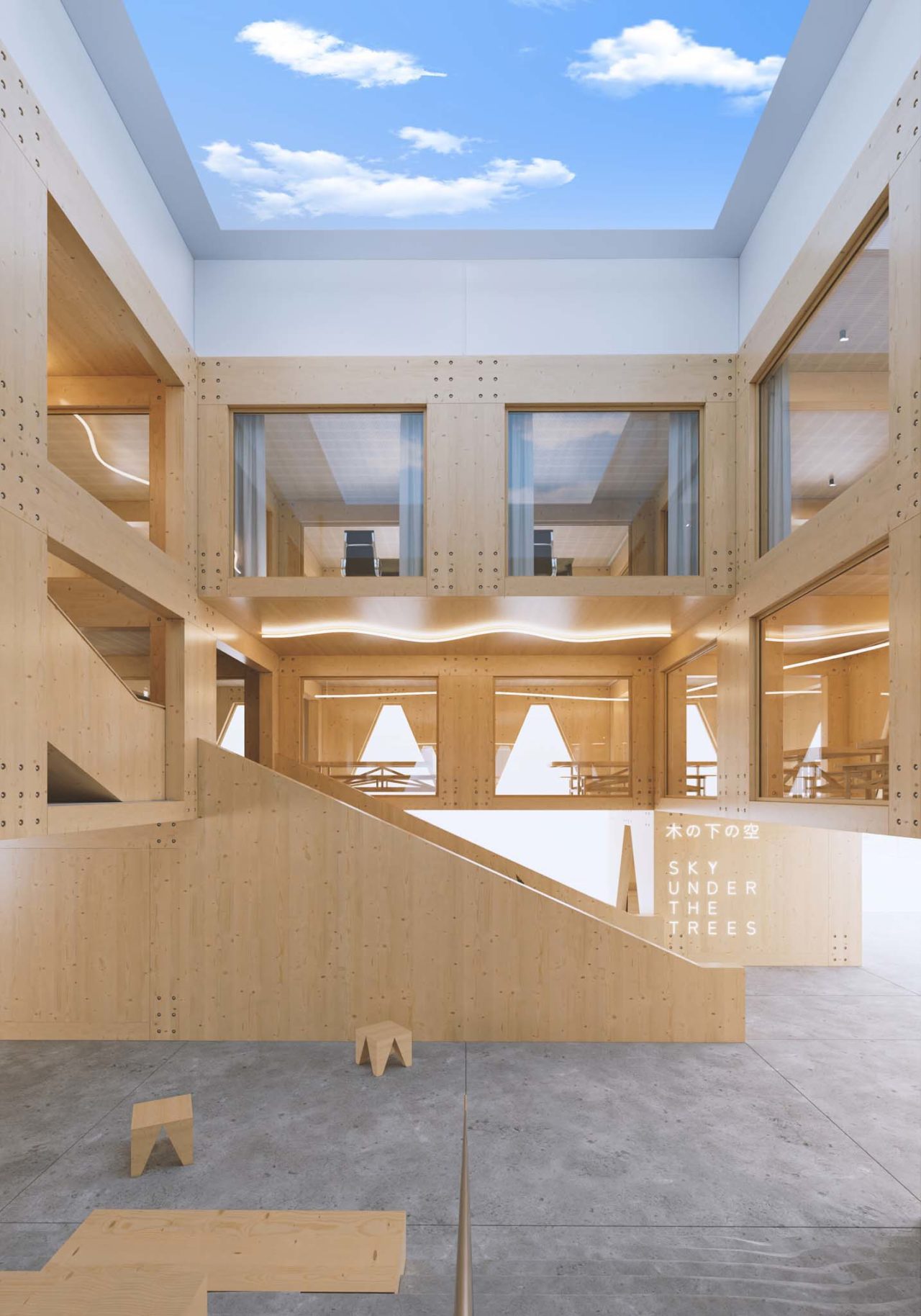
The project description is provided by the architects, via Linka.
About the Architects:

“In 2008, we graduated from the Faculty of Arts and Architecture of the Liberec Technical University and we founded a private architectural studio. We named it after the most beautiful word in the Czech-Swedish dictionary. We are Mjölk. While the majority of our university classmates left to work in established firms in Prague or abroad, we decided to stay in Liberec and run our own studio. Now we’re on board a speeding train, looking out of the front windows, looking forward to whatever there is waiting for us next. Our goal is to analyze the local context, uncover hidden qualities of places, satisfy our clients’ deepest desires, and have fun doing all that. Hopefully, this joy of freedom and creativity will translate into our projects, and maybe even into our clients’ lives.”
